Allison Collection Photos
January, 1941
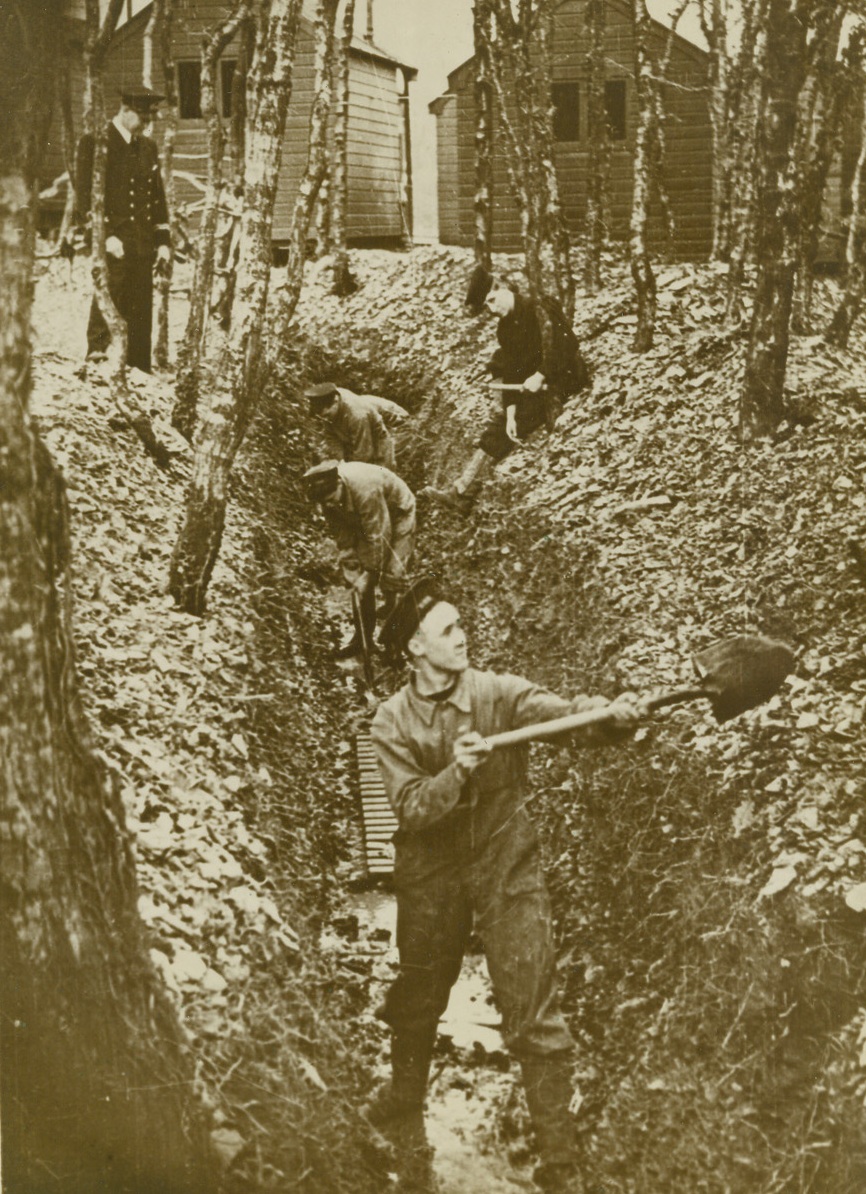
Oh, For the Life of a Sailor, 1/2/41 These British tars on a shore station find life there somewhat different from life at sea. While waiting for their new ship, says English censor (who refuses to say where the men are), they made good use of the time digging trenches. Credit: ACME;

England's Inland "Navy", 1/2/41 ENGLAND—To guard England’s inland waterways against possible seaplane landings during a German invasion attempt, and at the same time to train young sailors for the Royal Navy, a fleet of small, fast and easily maneuverable launches constantly patrol in conjunction with units of the Navy and Naval Air Arm. Photo shows two launches on patrol, with guns trained on the sky where the enemy might appear. Credit Line (ACME);
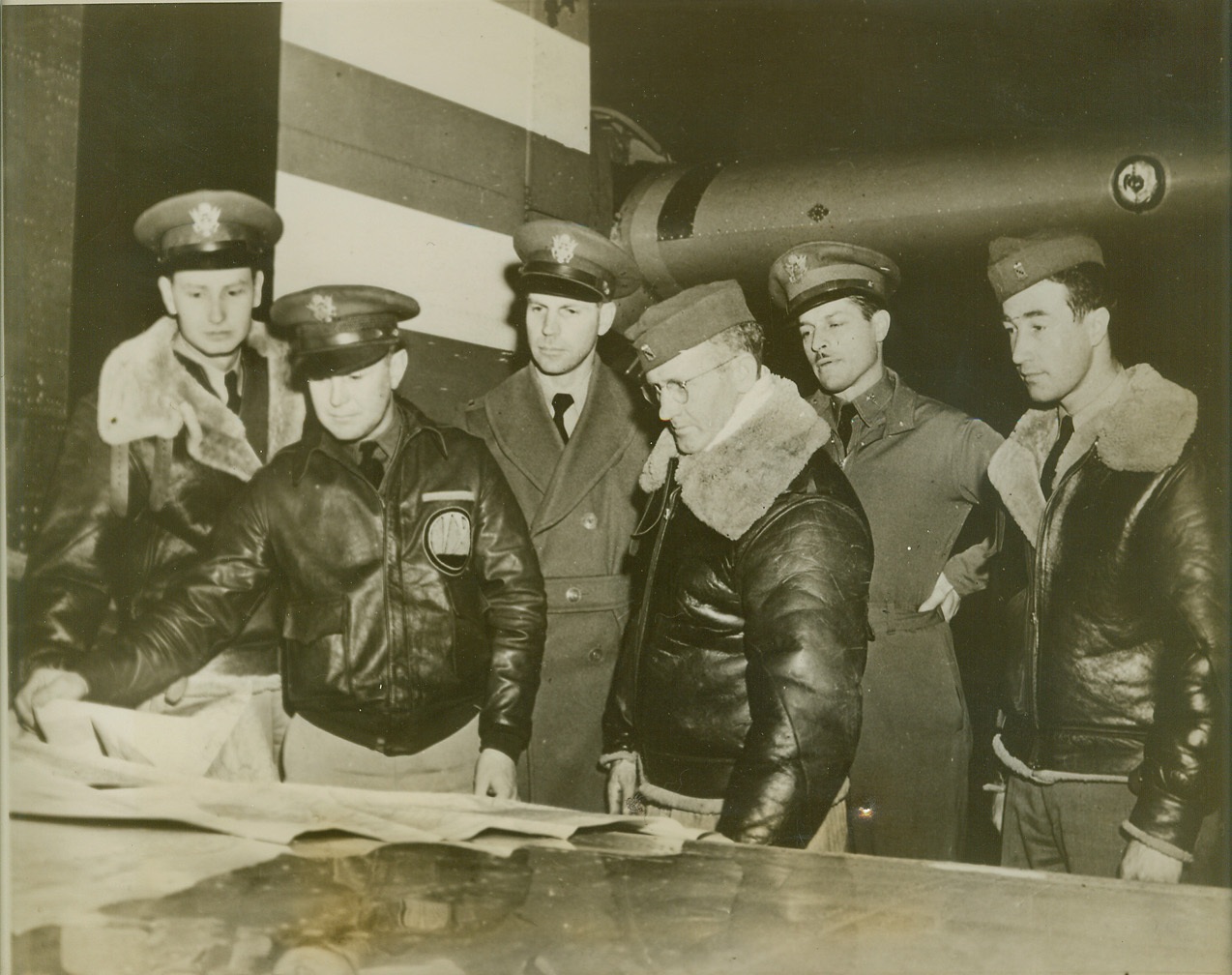
Test “Flying Fortress” Endurance, 1/5/41 DAYTON, OHIO – Crew of Boeing B 17 army bomber checking route of 15 hour 3000 mile endurance test, longest nonstop non refueling flight ever attempted by army air force, shortly before take-off from Patterson field at Dayton, Ohio. Left to right: Lieut. G.E. Glober, Lieut P.F. Davis, Lieut M.M. Munn, Sgt. H.A. Lindle, Capt. O.O. Benson, Sgt. E.W Meeker. Please credit “ACME”;
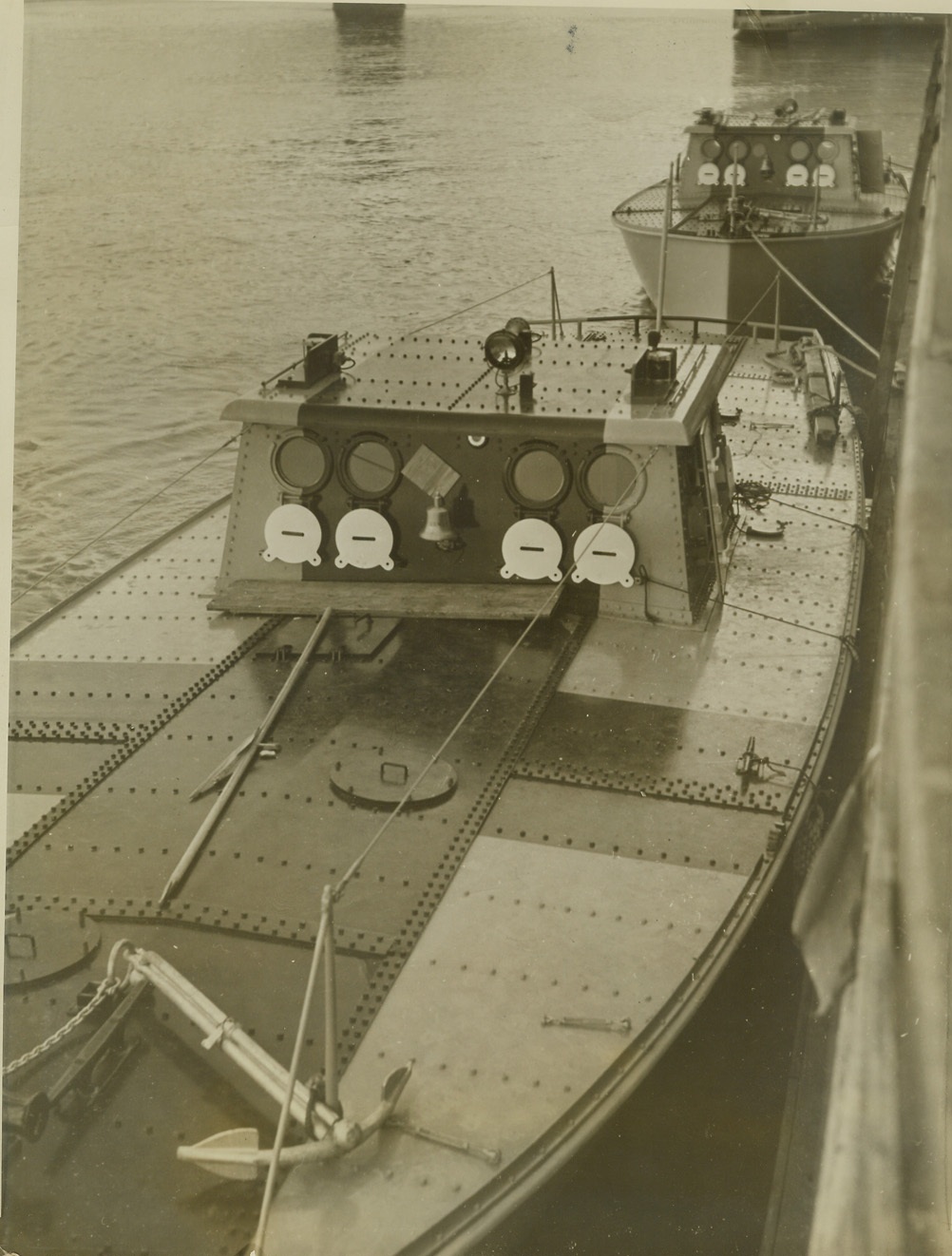
TARGETS FOR DIVE BOMBERS, 1/5/41 ST. LOUIS, MO. – Armored gasoline powered target boats tied up in St. Louis, enroute from Great Lakes Training Station to join naval units in Gulf of Mexico. Black stripe down center of boats are bulls eyes for dive bombers which use the boats as live targets during practice. Although planes use Non penetrating bombs operators of targets have feeling of mouse waiting for cat to pounce. Credit: OWI Radiophoto from ACME;
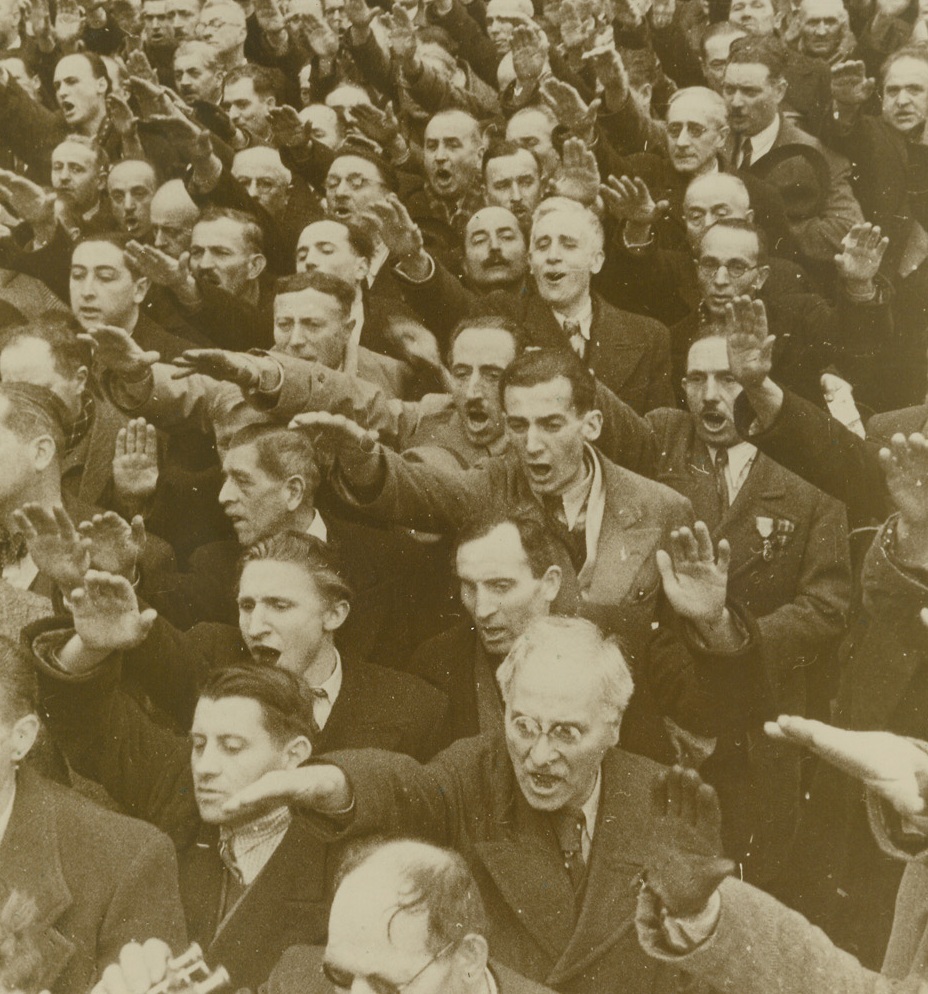
Veterans Swear Allegiance to Petain, 1/7/41 Lyon, France—Massed French war veterans raised their right arms as they swear allegiance to the regime of Marshall Petain during the great welcome accorded the French Chief of State during his recent visit to Lyon. Passed by French censor. Credit: ACME.;
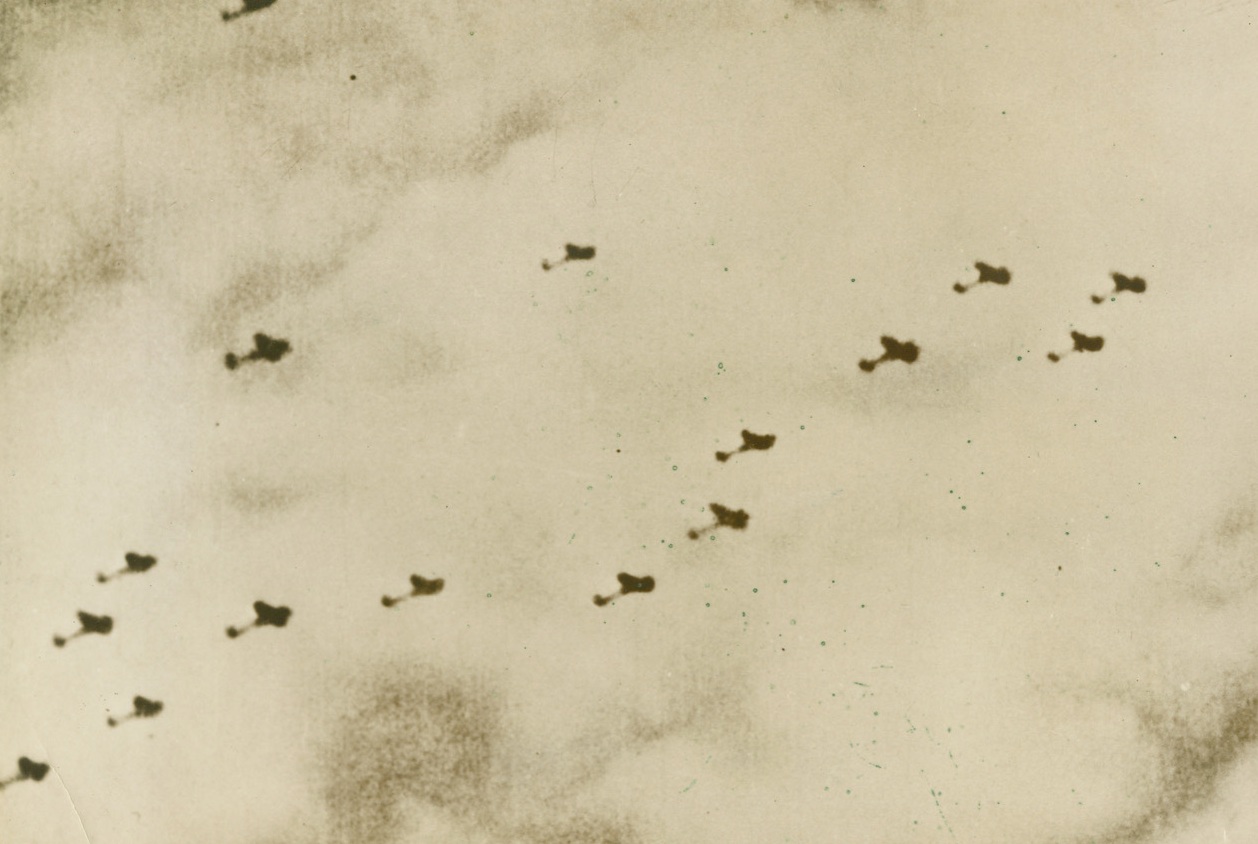
BRITISH RECORD OF AIR BATTLE, 1/7/41 when the firing ceases, the photographic record stops. If the pictures sometimes lack clarity due to cloud condensation on the lens, vibration and fumes from exhaust of aircraft being attacked, they nevertheless provide certain evidence of concentrated gunfire by fighter planes. The eight-gun power of a fighter plane has greater strength than the entire machine gun strength of a 1914 brigade of Infantry. Photo shows: - a formation of Heinkel III’s at which a British fighter plane is firing. Credit: Acme;
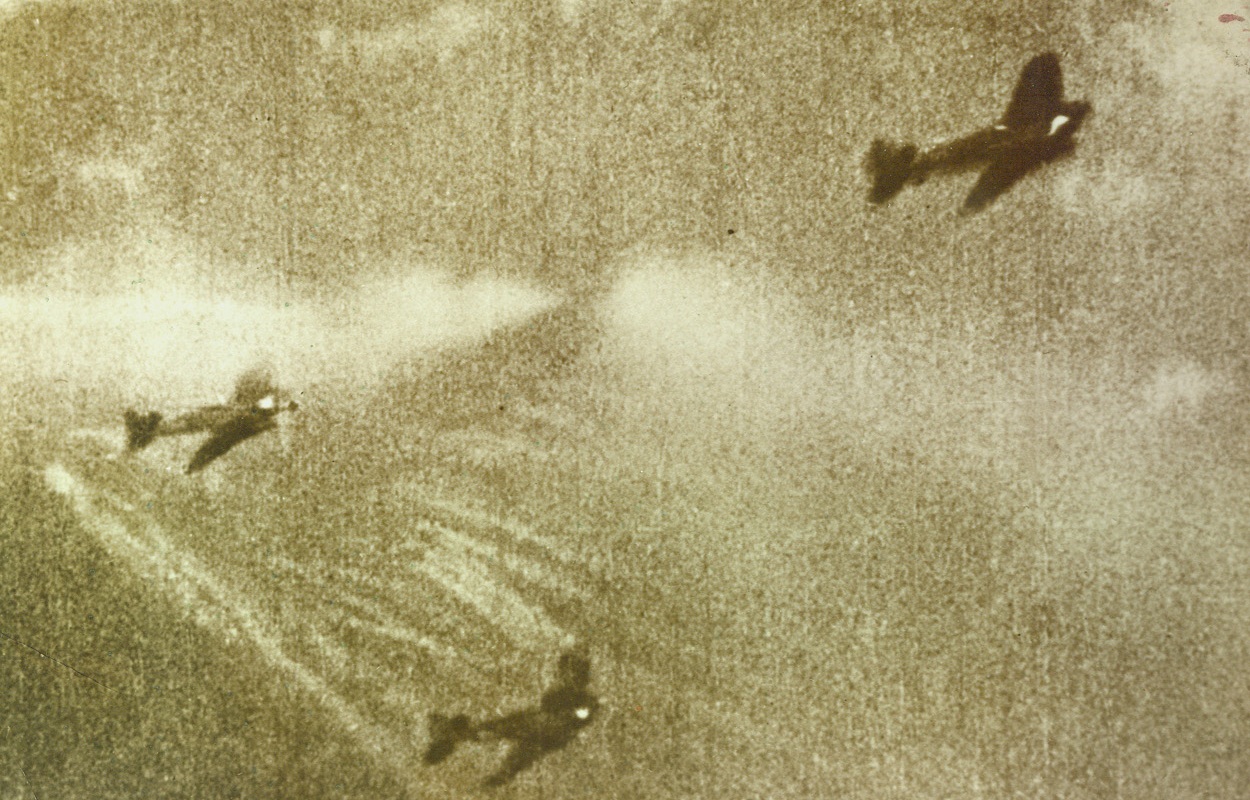
British Record Of Air Battle, 1/7/41 when firing ceases, the photographic record stops. If pictures sometimes lack clarity due to cloud condensation on lens, vibration and fumes from exhaust of aircraft being attacked, they nevertheless provide certain evidence of concentrated gunfire by fighter planes. The eight-gun power of a fighter plane has greater strength than the entire machine gun strength of 1914 Brigade of Infantry. Photo shows: Attacking Heinkel 111’s caught in the hail of bullets from the defending fighter plane. Credit Line (ACME);
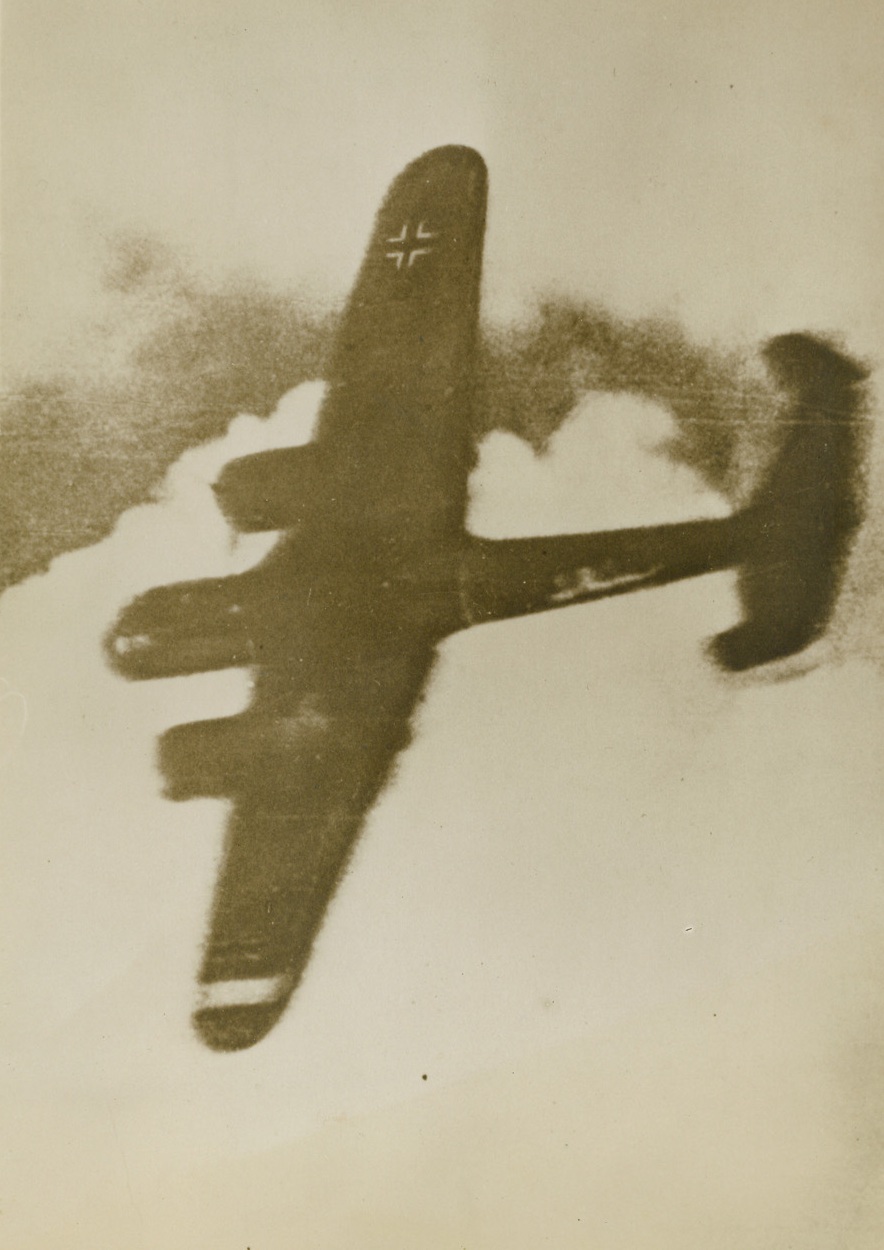
BRITISH RECORD OF AIR BATTLE, 1/7/41 when firing ceases, the photographic record stops. If pictures sometimes lack clarity due to cloud condensation on lens, vibration and fumes from exhaust of aircraft being attacked, they nevertheless provide certain evidence of concentrated gunfire by fighter planes. The eight-gun power of a fighter plane has greater strength than the entire machine gun strength of 1914 Brigade of Infantry. Photo shows: A Dornier at close…attacked by a British…;
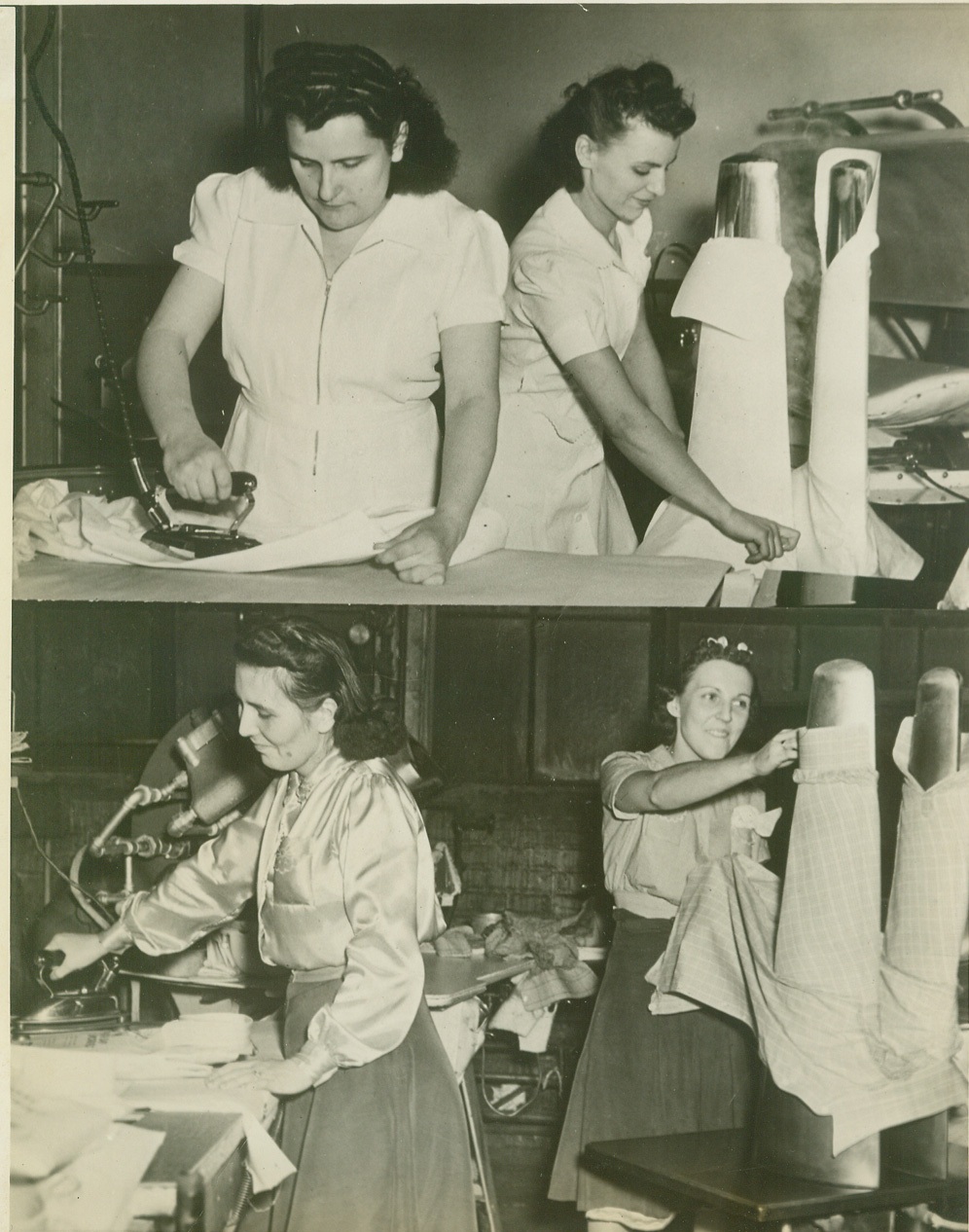
TO STAGE SHIRT-IRONING CONTEST, 1/10/41 CLEVELAND, O.- Two teams of two women each from two laundries here will vie for shirt-ironing honors. The women, using latest equipment instead of traditional flat iron, will see who can turn out the greatest number of men’s shirts in an hour. In top photo Miss Julia Metro, left, and Mrs. Mary Tackas will represent The Rapid Three Hour Laundry. Below Miss Julie Bradia, left, and Miss Mary Varovac will uphold hone of New Method Laundry. Credit: OWI Radiophoto from ACME;
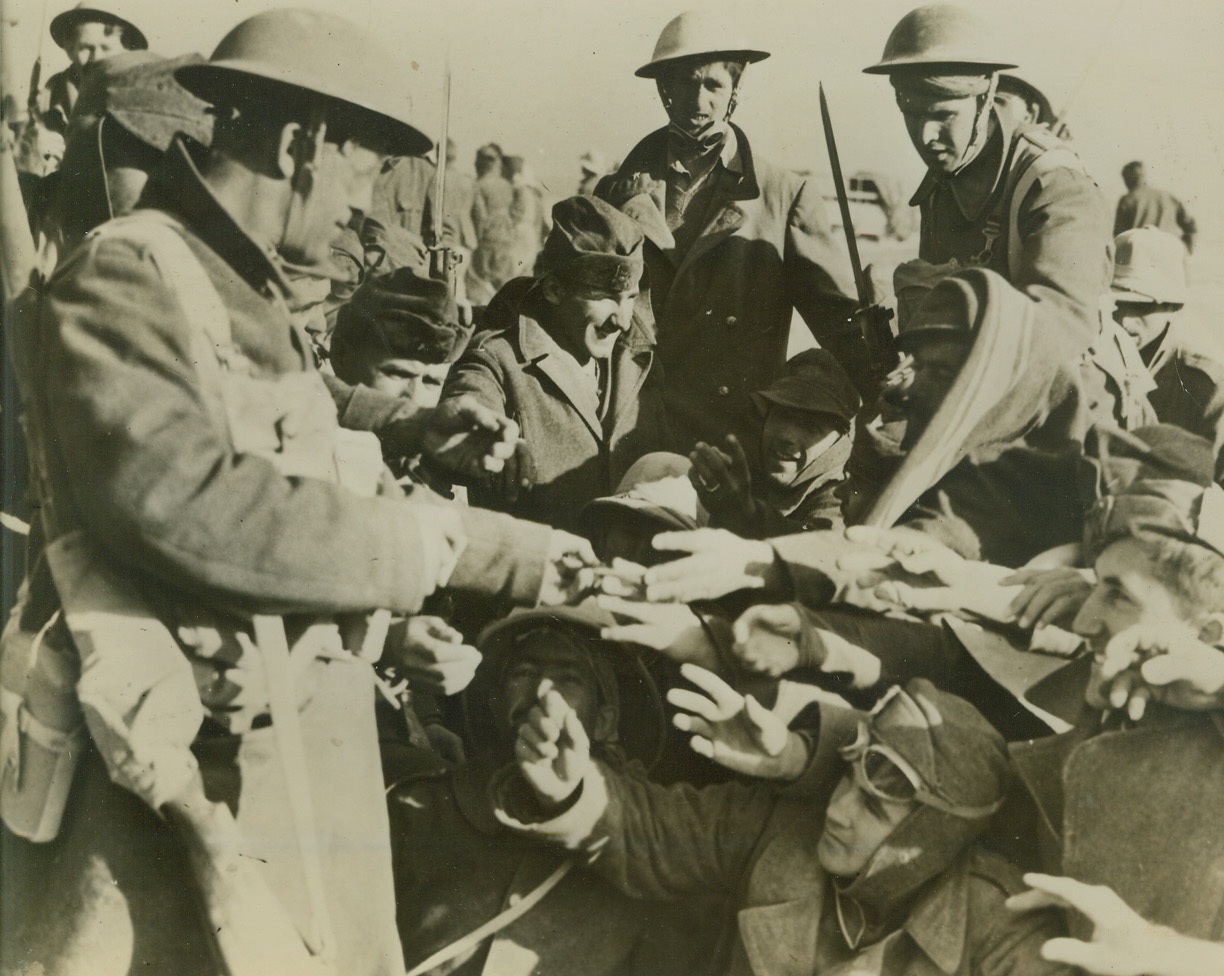
After the Battle: Italian Prisoners Get Smokes, 1/11/41 After the smoke of battle comes the smoke of cigarettes and Italian prisoners, captured by British in the Western Desert near Sioi Barrani, are shown reaching for cigarettes offered by one of their captors.;

German Fliers Arrive in Italy, 1/11/41 ITALY – “Italians greeting German fliers upon arrival in Italian city,” was the meager caption accompanying this picture, radioed from Berlin. According to a Rome announcement, German fliers recently took part in an Italian torpedo-plane and dive bombing attack on a formation of British warships in the Sicilian Channel. Credit: (ACME Radiophoto);
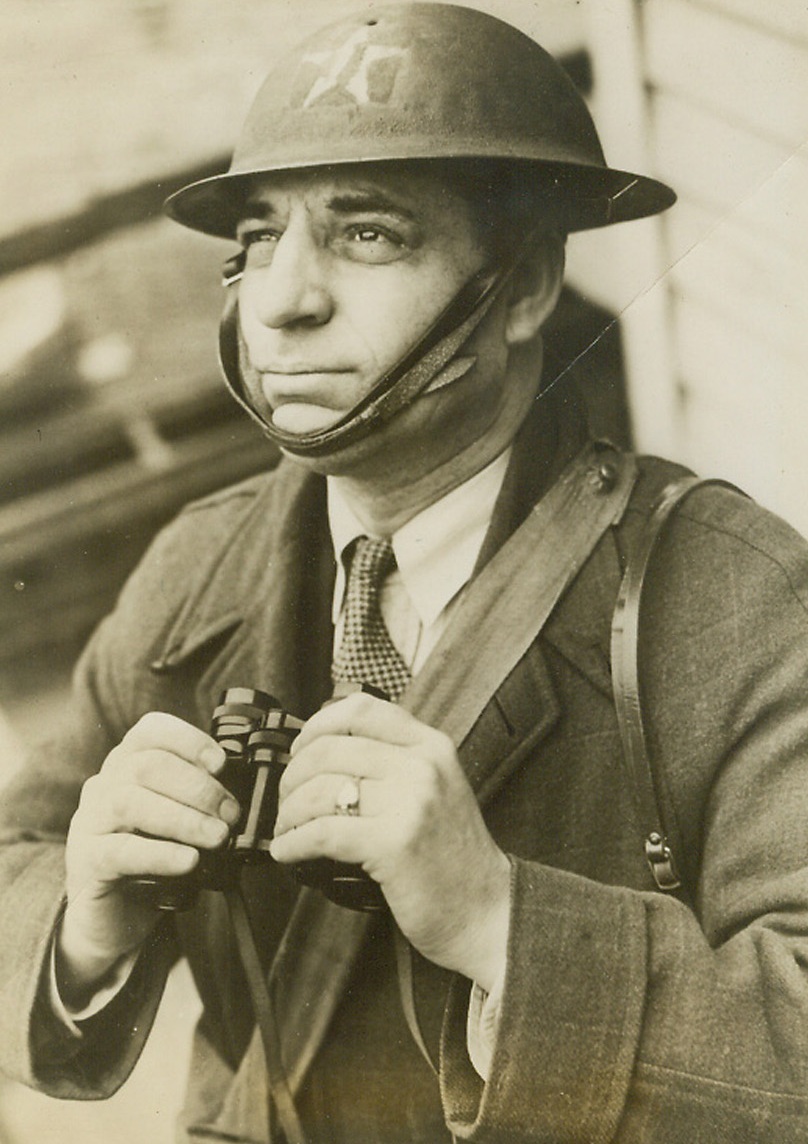
Milwaukee Organizes Air Warden Corps, 1/11/41 Milwaukee, Wic. Local Air Warden Corps patterned after the system used by Great Britain, has been organized to train Milwaukeeans in air raid defense in event of emergency by a group of ex-Marines, who have elected William G. Hoppe, above, commander of unit. Thought to be the first unit organized in the United States, the corps will be trained in fire prevention, handling of incendiary bombs, first aid, and use of gas masks, and placed in charge of sections under their care. Credit: ACME.;
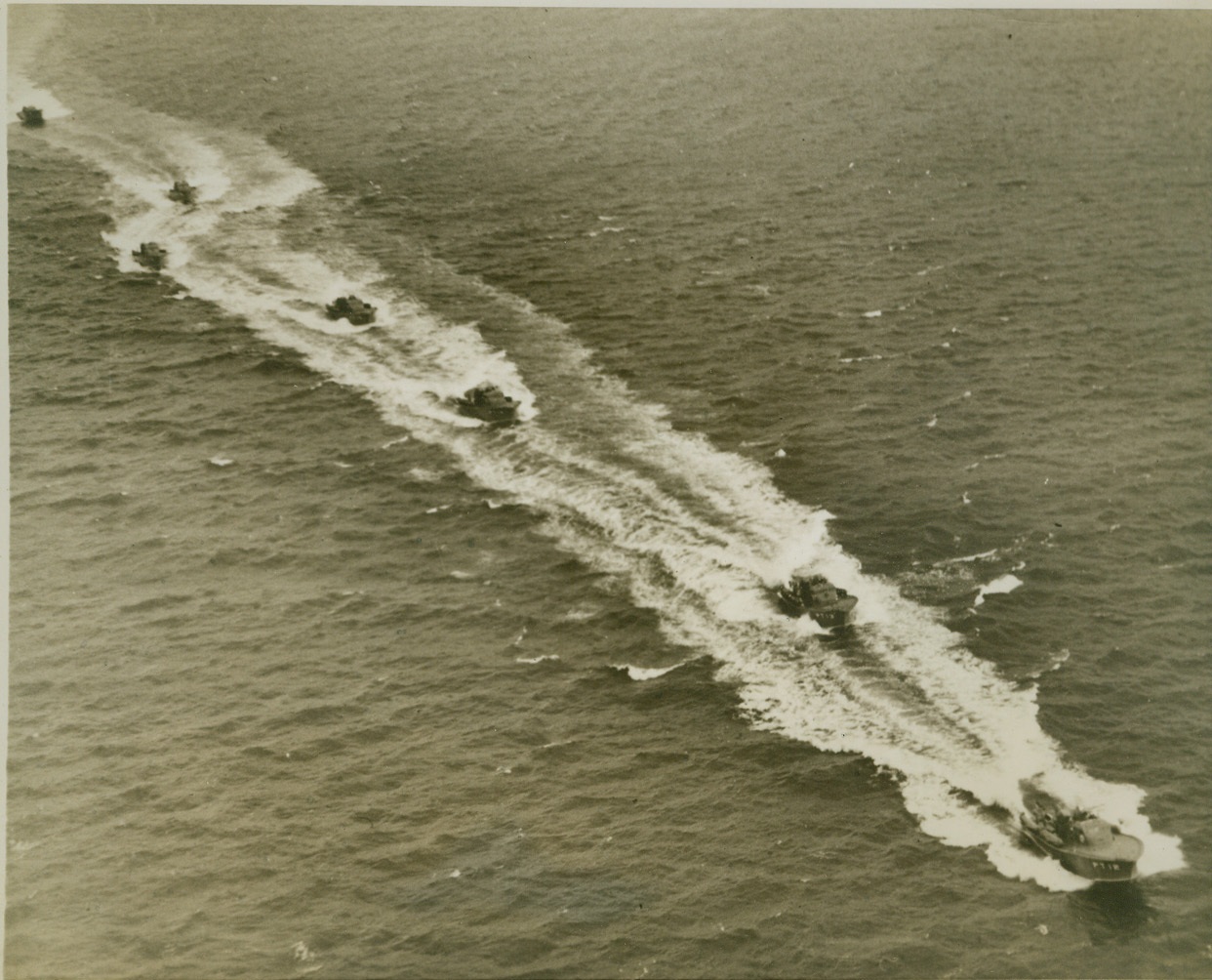
MOTOR TORPEDOBOAT FLOTILLA HEADS SOUTH, 1/13/41 NEW YORK CITY – An airview of the flotilla of eleven of the Navy’s motor torpedoboats, detailed for duty in southern waters “somewhere off Key West, Fla.,” as the deadly and swift little craft raise foaming wakes in the waters of Lower New York Bay with a fast start to their new stations. These craft, which can do over 70 miles per hour, are manned by 20 officers and 150 men, specially selected for the assignment. The flotilla is commanded by Lieutenant Commander Earl S. Caldwell. Credit: OWI Radiophoto from ACME;
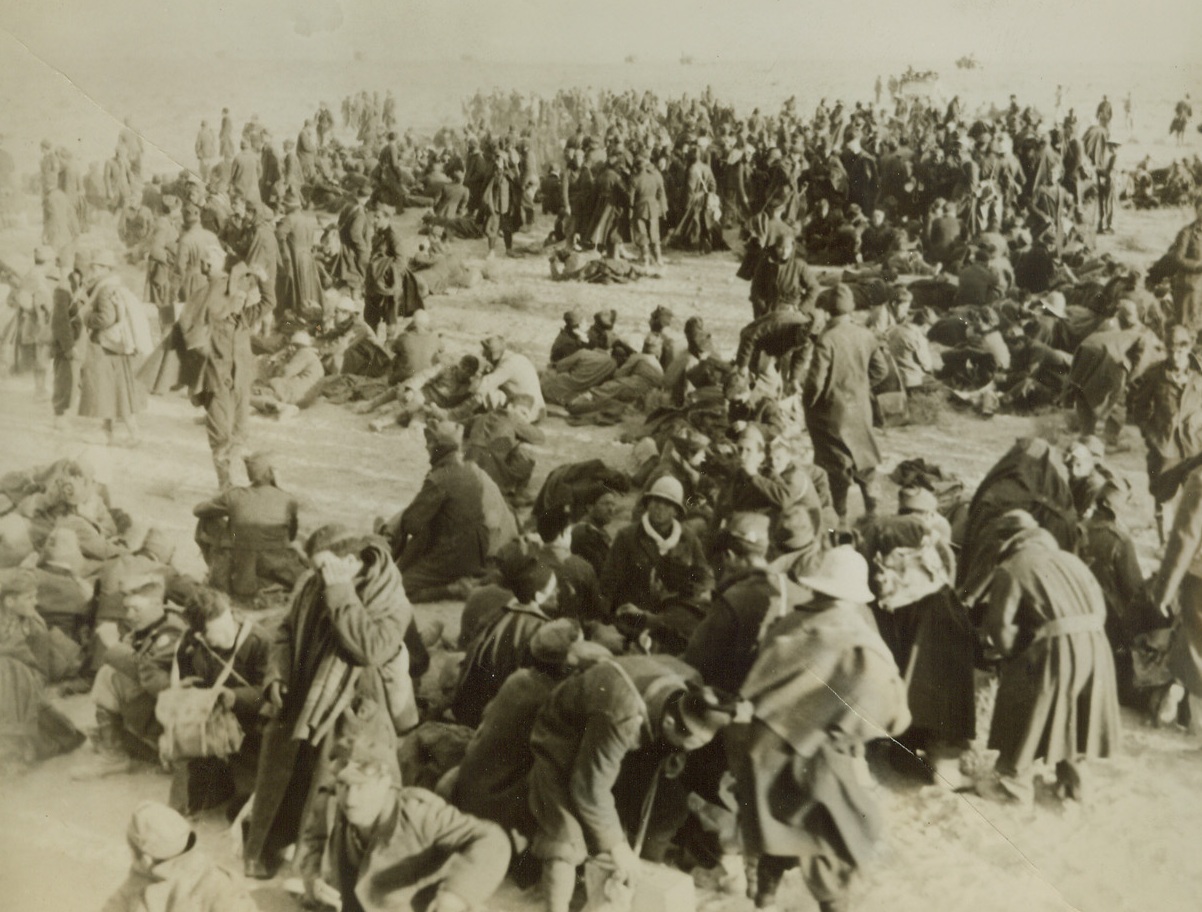
Booked “for the Duration”, 1/13/41 North Africa—Some of the thousands of Italians taken prisoner by the English and Australian forces pushing into Libya await transportation to prison camps at an unnamed spot in the Western Desert. Photo made by the Australian army photographer, flown from Sydney to the U.S. Credit: ACME.;
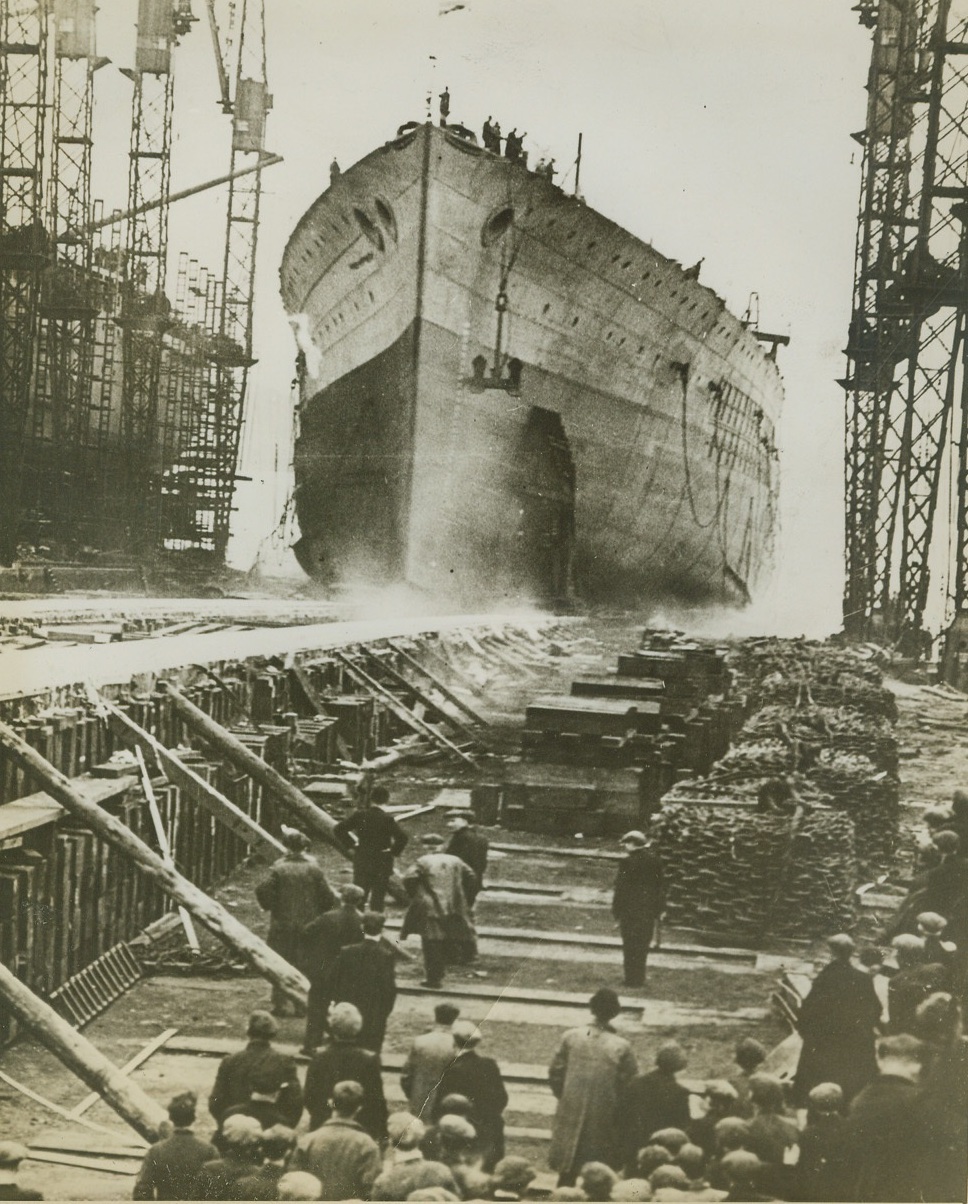
British Battleship Launched, 1/14/41 CLYDESIDE -- The 35,000-ton British battleship "Duke of York" slides into the water on the Clydeside after launching ceremonies presided over by Queen Elizabeth and King George. She is one of five ships of this class which were started before the war broke out. Credit: (ACME);

Destructive Flames Sweep London's "City", 1/14/41 LONDON, ENGLAND -- The night sky is brilliantly lighted by the flames sweeping London's historic "City" in the worst raid of the war on London in which German bombers dropped thousands of incendiary bombs. The Guildhall, the famous Wren Church of St. Bride's and dozens of other buildings of history were ruined in the raid. Credit: (ACME);
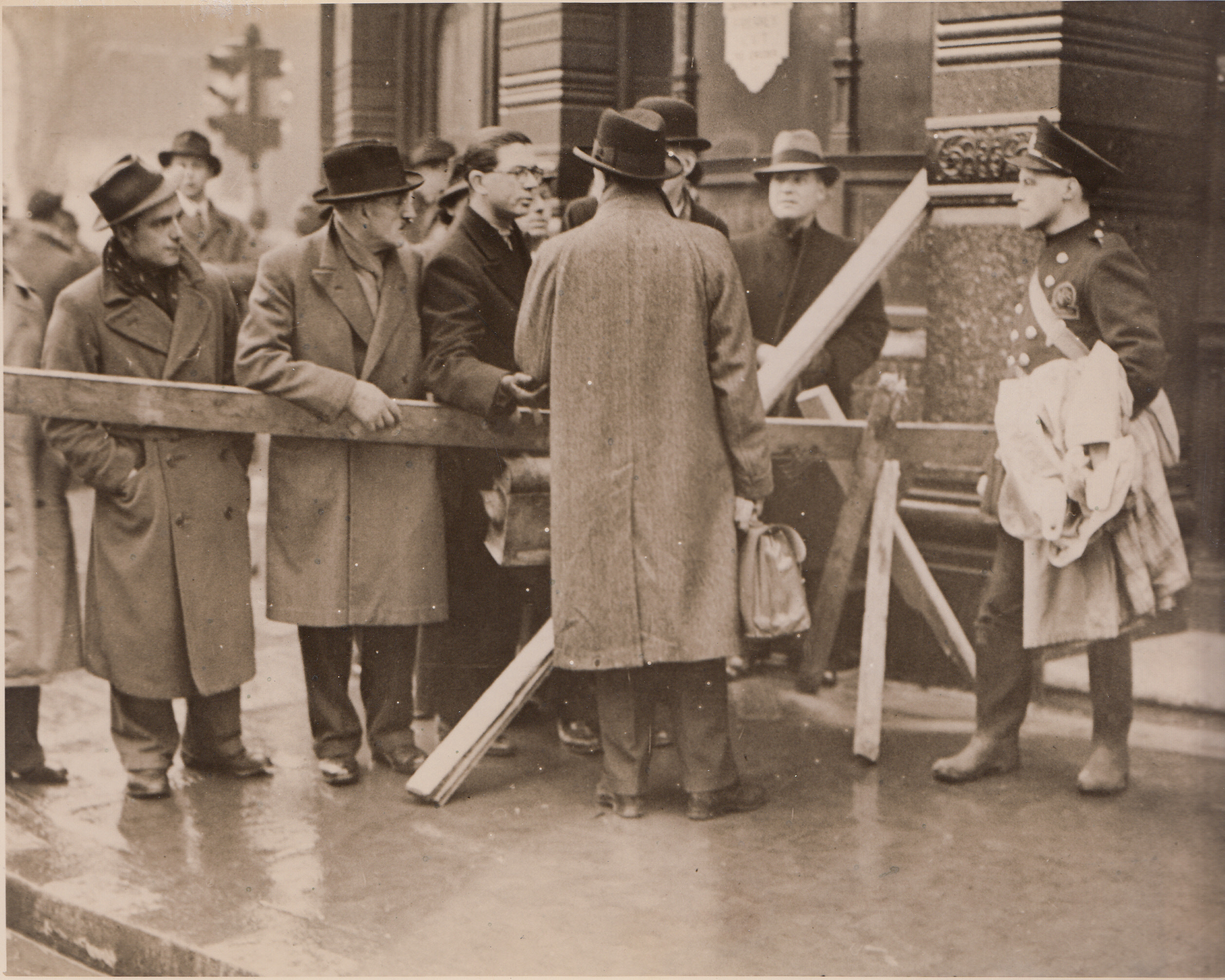
London Carries On, 1/14/41 LONDON - Following the most destructive air raid ever felt by the city, Londoners line up at this barrier to ask officials if their office building is still standing.;
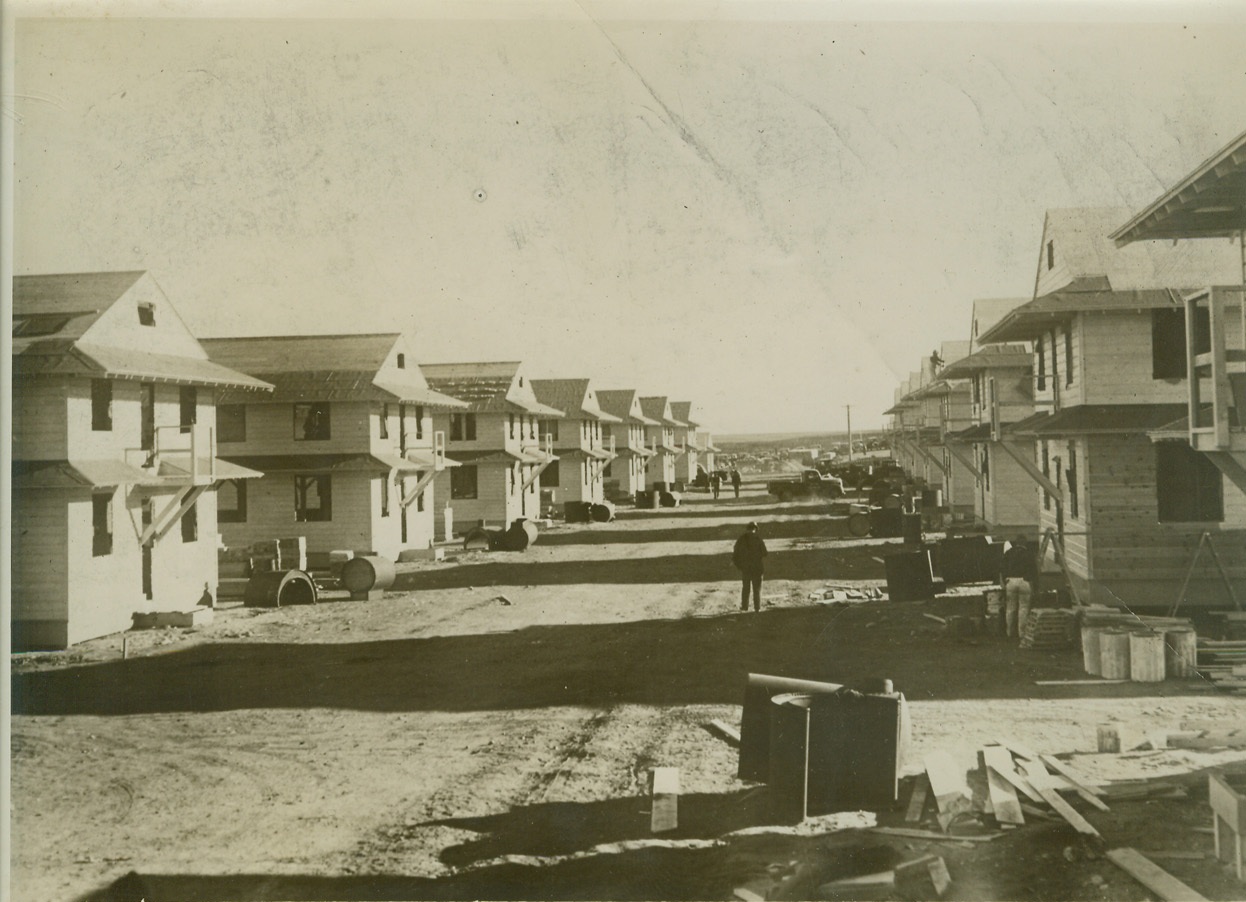
CONSTRUCTION OF ARMY BARRACKS AHEAD OF SCHEDULE, 1/14/41 FORT WARREN, WYO. – Part of 300 buildings under construction at Ft. Warren, Wyoming, which will be finished by March 1, far ahead of schedule. The barracks are being built at a cost of $1,500,000, and will house 8,000 conscriptees. The cantonment occupies territory adjacent to present post buildings, which, prior to Nov. 1, was virgin prairie. Credit: OWI Radiophoto from ACME;
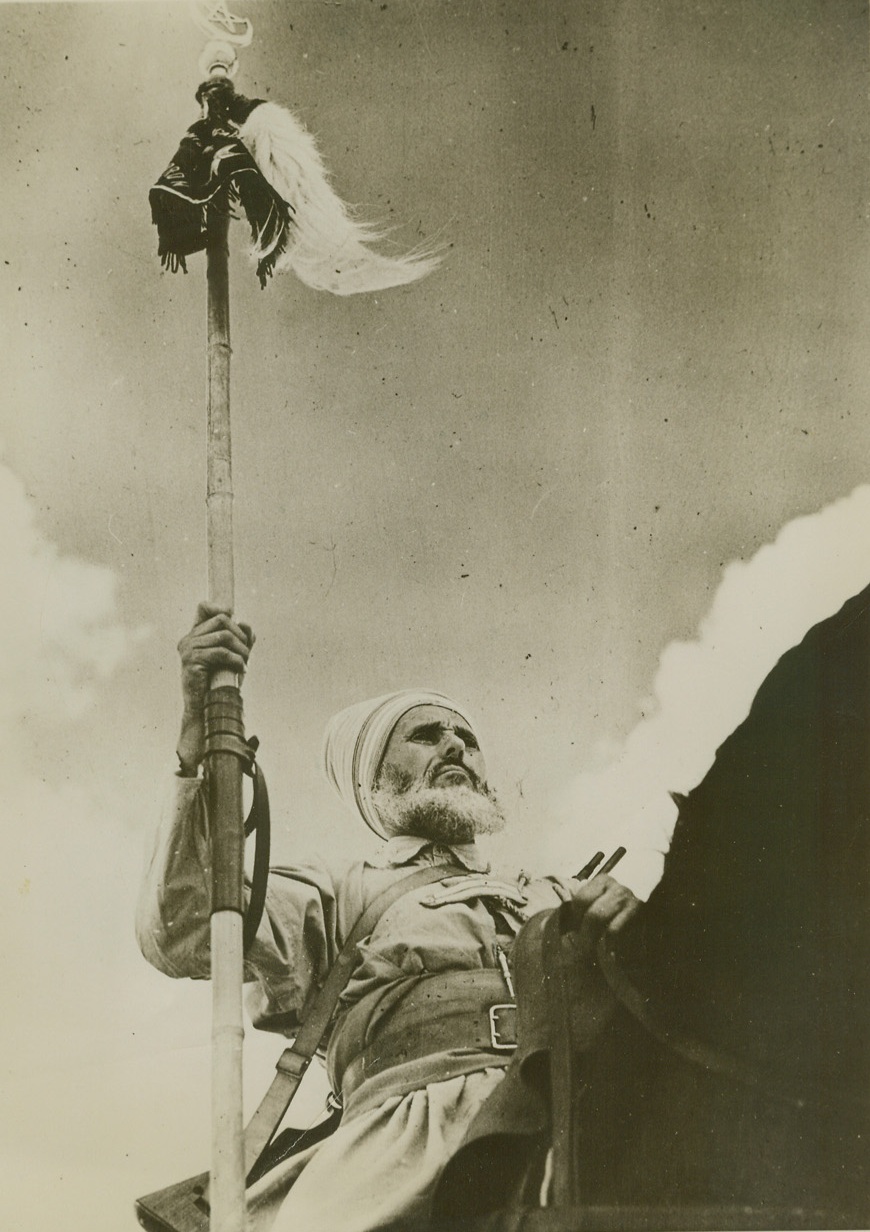
FREEDOM – HIS BREATH OF LIFE, 1/14/41 NORTH AFRICA – As a Sergeant proudly carries the honored pennant of his troops, Spahis, famous desert-bred cavalry of France, maintain an unceasing patrol in the desert with the forces of Free France under General De Gaulle. After the collapse of France, the Spahis rode from Syria to join De Gaulle’s men. Credit: OWI Radiophoto from ACME;
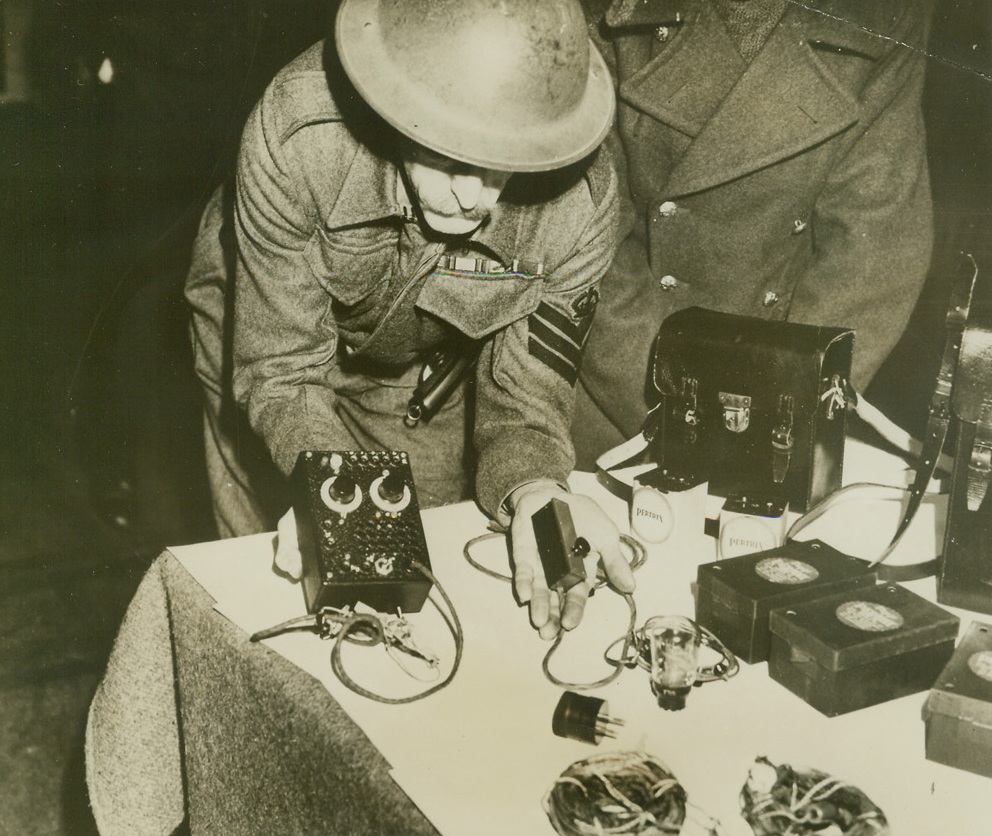
BRITAIN EXECUTES “RADIO SPIES”, 1/14/41 LONDON—Here are the dismantled radio sets with were found on the persons of Jose Waldberg, 25-year-old German from Mainz, and Karl Meier, 24, a Dutch subject of German origin, when arrested by British authorities. Under the Treachery Act the men were found guilty of being spies and hanged at Pentonville Prison.Credit: Acme;
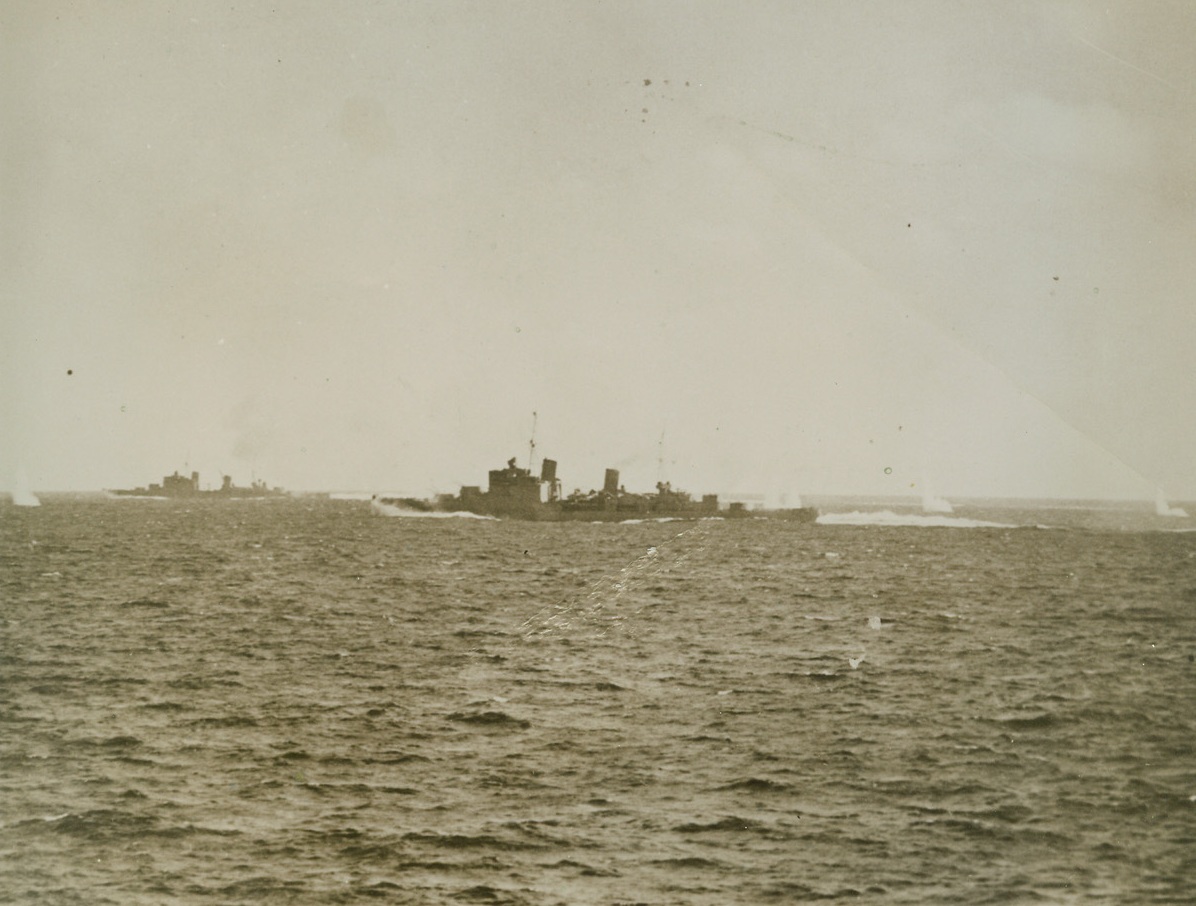
SHELLS FALL AROUND BRITISH SHIPS IN NAVAL BATTLE, 1/14/41 OFF THE COAST OF SARDINIA—Shells from distant Italian warships raise geysers around two of the British cruisers which took part in the naval engagement westward of Sardinia on Nov. 27th. The battle took place after British planes located an Italian force of two battleships and a large number of cruisers and destroyers about 75 miles away from the British flotilla. The British ships changed course and sped to intercept the enemy. This picture was taken from one of the units of the British fleet during the long range engagement which ended with the Italian ships seeking the protection of coastal defenses. Credit: Acme;
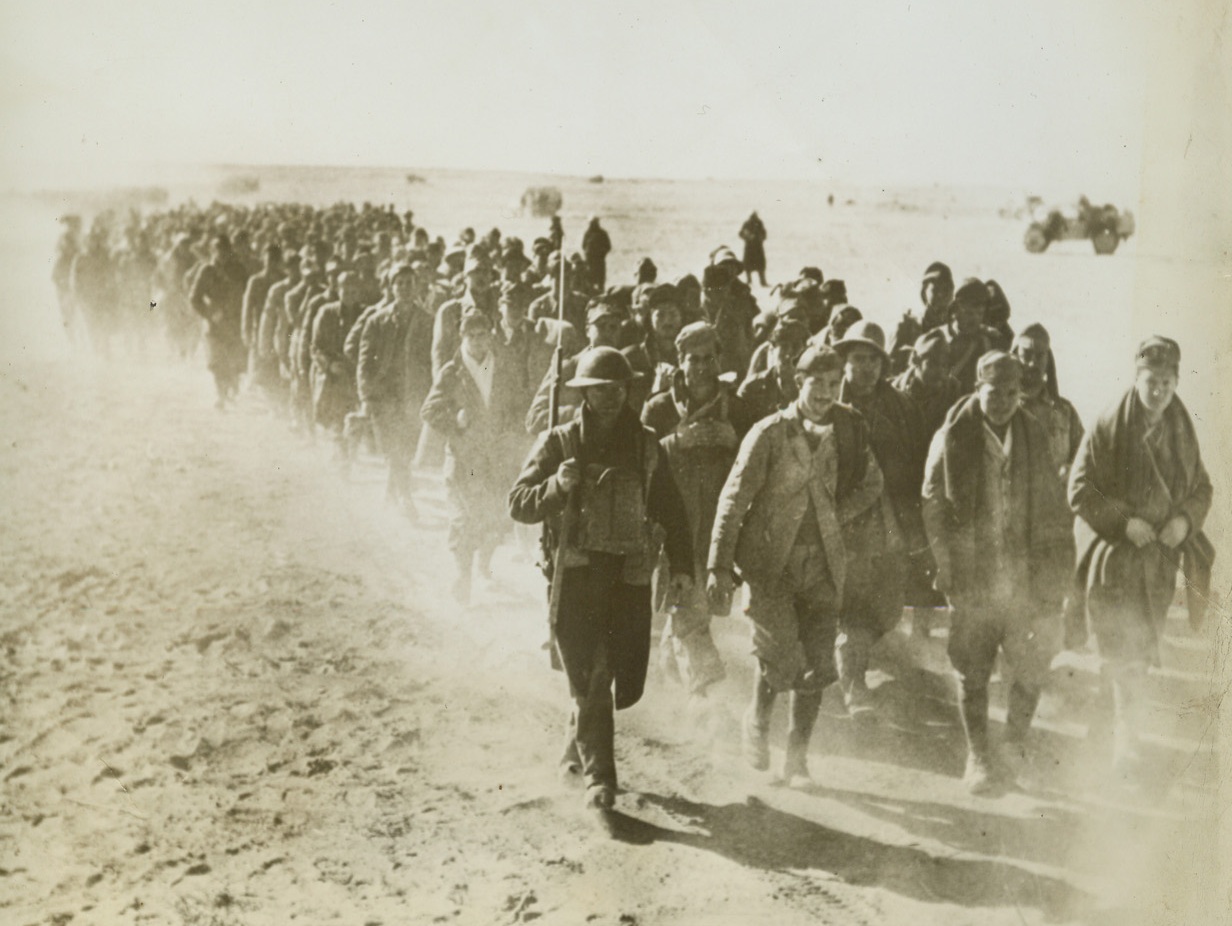
Italian Prisoners Taken in Libyan Drive, 1/14/41 Libya—Guarded by a lone British soldier with a bayoneted rifle, several hundred Italian prisoners taken by the British forces in their drive against Sidi Baranni and Bardia raise clouds of dust as they march to the rear and waiting concentration camps.Passed by British censor—via clipper.Credit: ACME;
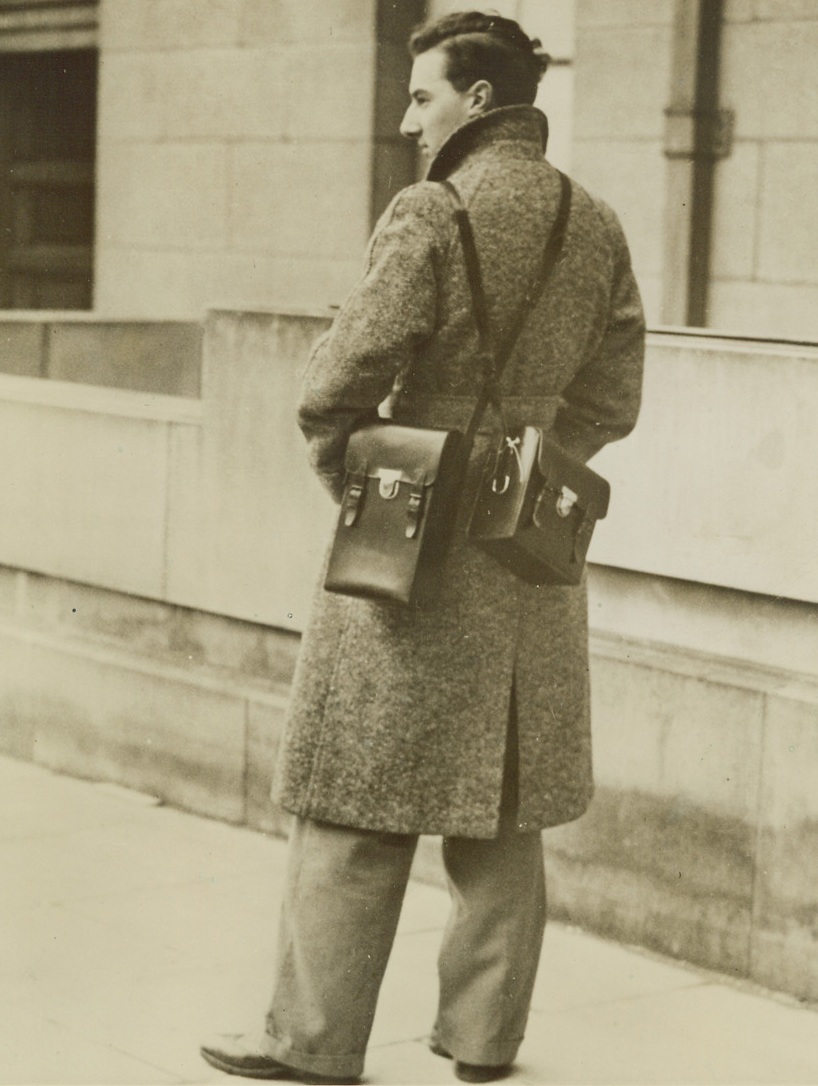
BRITAIN EXECUTES “RADIO SPIES”, 1/14/41 LONDON: - In leather cases such as this man is carrying, Jose Waldberg, 25 year-old German frm Mainz, and Karl Meier, 24, a Dutch subject of German origin, carried radio transmitting sets with which they sent information to Germany from England. They were received in England as refugees, mingled with people during the day and in the night would retire to a lonely spot to transmit their messages. Captured, they were convicted under the Treachery Act and hanged at Pentonville Prison. Photo passed by British censor. Credit: Acme;
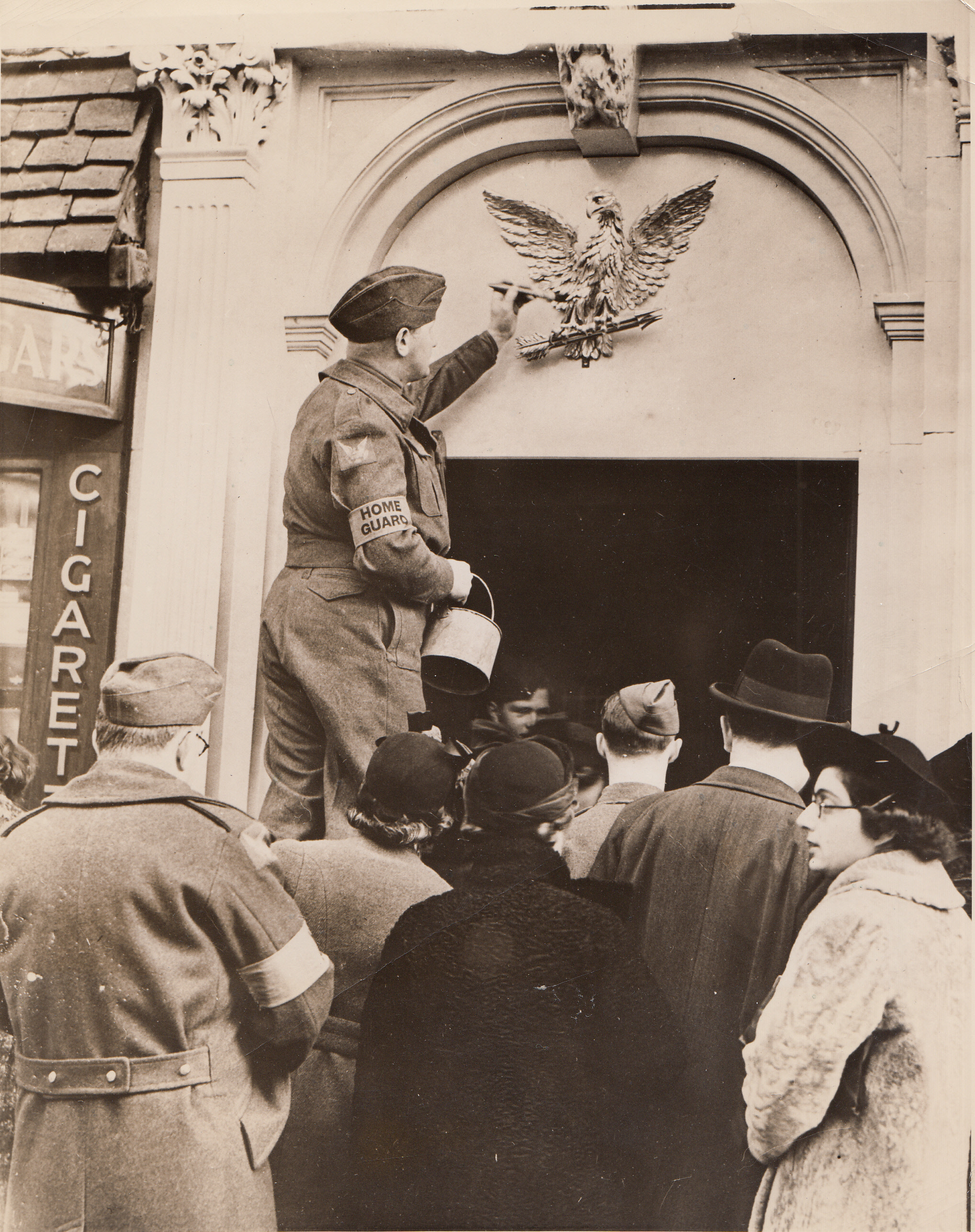
NEW CLUB FOR AMERICANS, 1/14/41 LONDON: - A member of the American mechanized corps serving with the British, gilds the eagle over the entrance to the American Eagle Club after the club was formerly opened, Dec. 17. The club will be used as a center for all Americans serving with the British forces.;
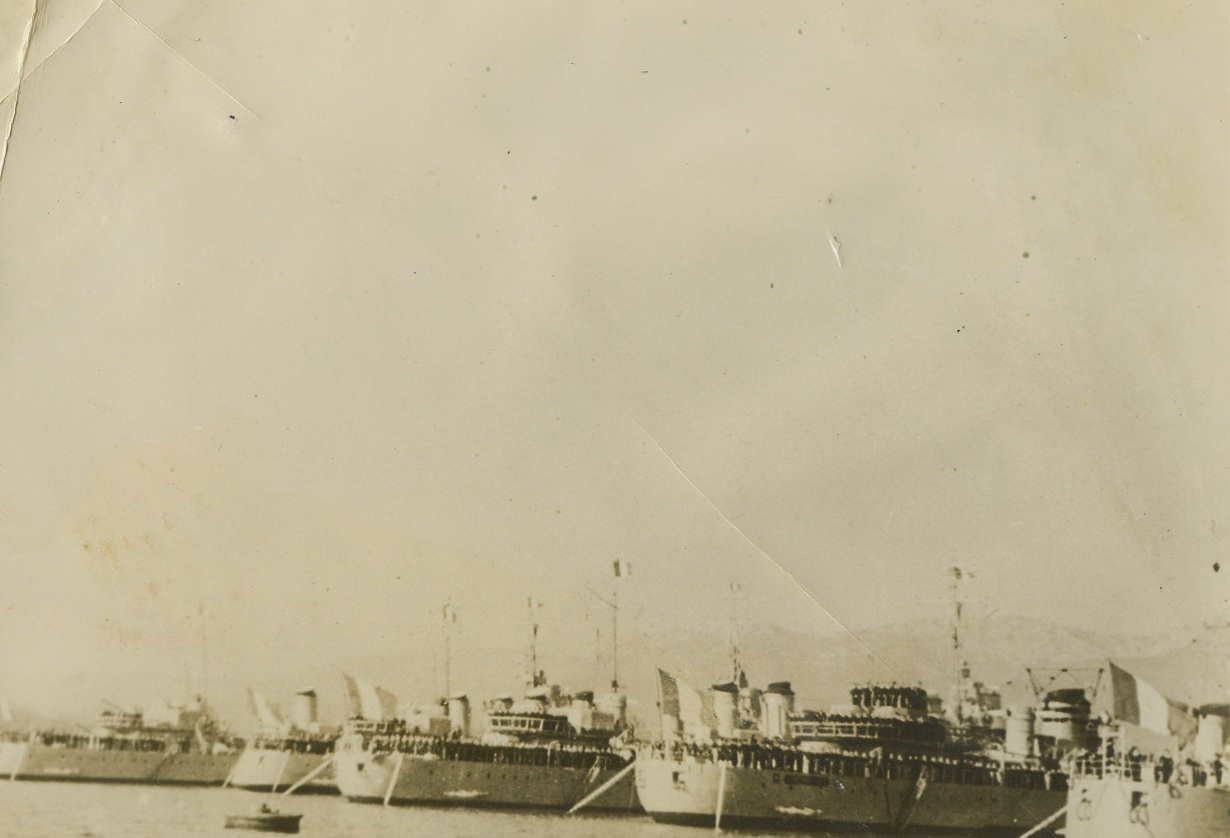
Vessels awaiting inspection by Marshall Petalin, 1/15/41 Vessels awaiting inspection by Marshall Petalin French fleet taken in (illegible word) by USA;

The Eagle Returns to France, 1/17/41 Paris, France – With solemn and impressive ceremonies, the body of Napoleon’s son, Napoleon Francois Bonaparte – known affectionately to the people of France as “the Eagle” – is interned at the Invalides after being brought from Schoenbrunn, where he died in 1832 at the age of 21. Credit line (ACME);
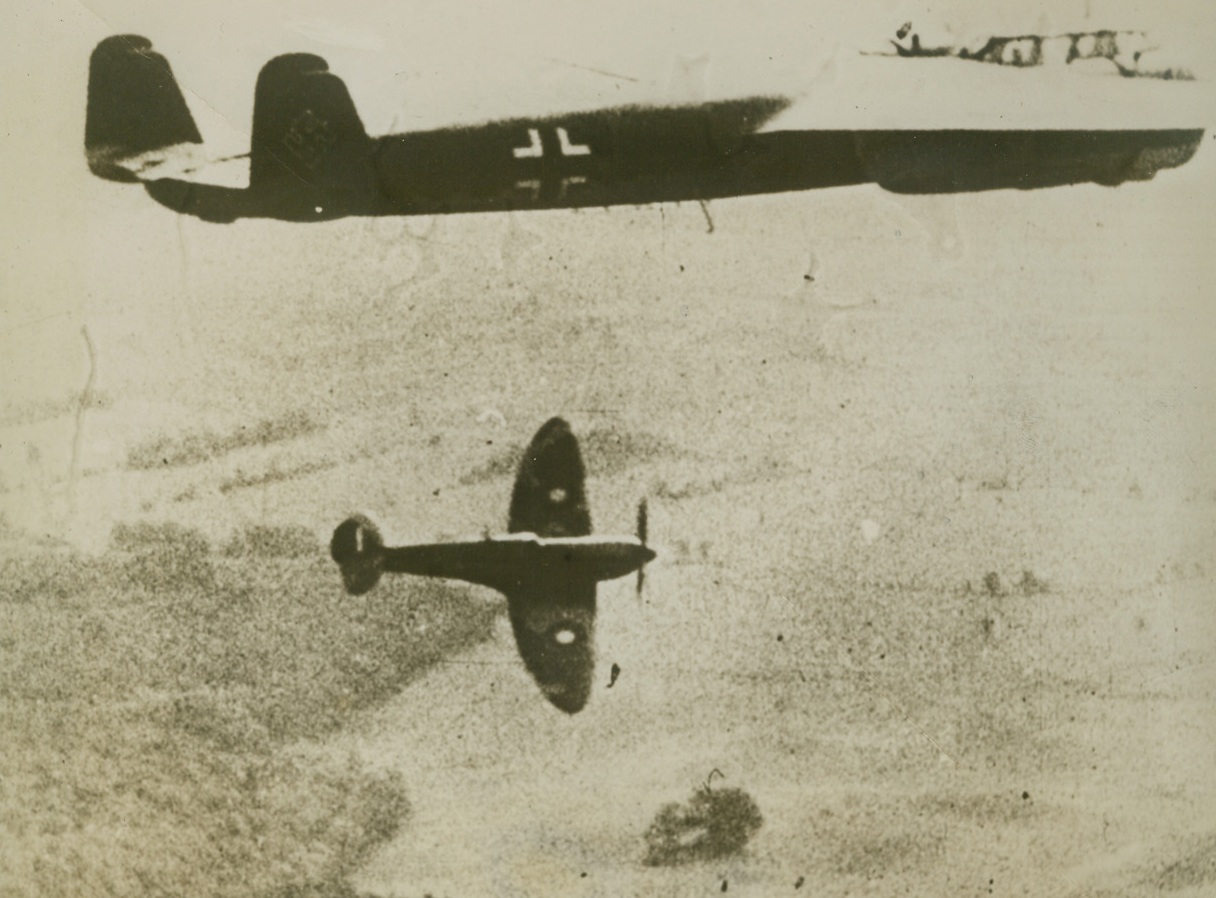
Air Adversaries Establish “Contact”, 1/18/41 “Over England”—According to the German caption this picture shows a British spitfire, retiring earthward after an unsuccessful attempt to bring down the DO-17 German plane flying over England. Credit: ACME.;

Liner Smashed by Heavy Sea, 1/24/41 At Sea: This life boat was torn loose and battered against the side of the ship when the liner Santa Rosa struck heavy weather during its run from South America to New York, near Bermuda. Much damage was suffered by the ship, which arrived in New York, January 24. Credit: ACME.;
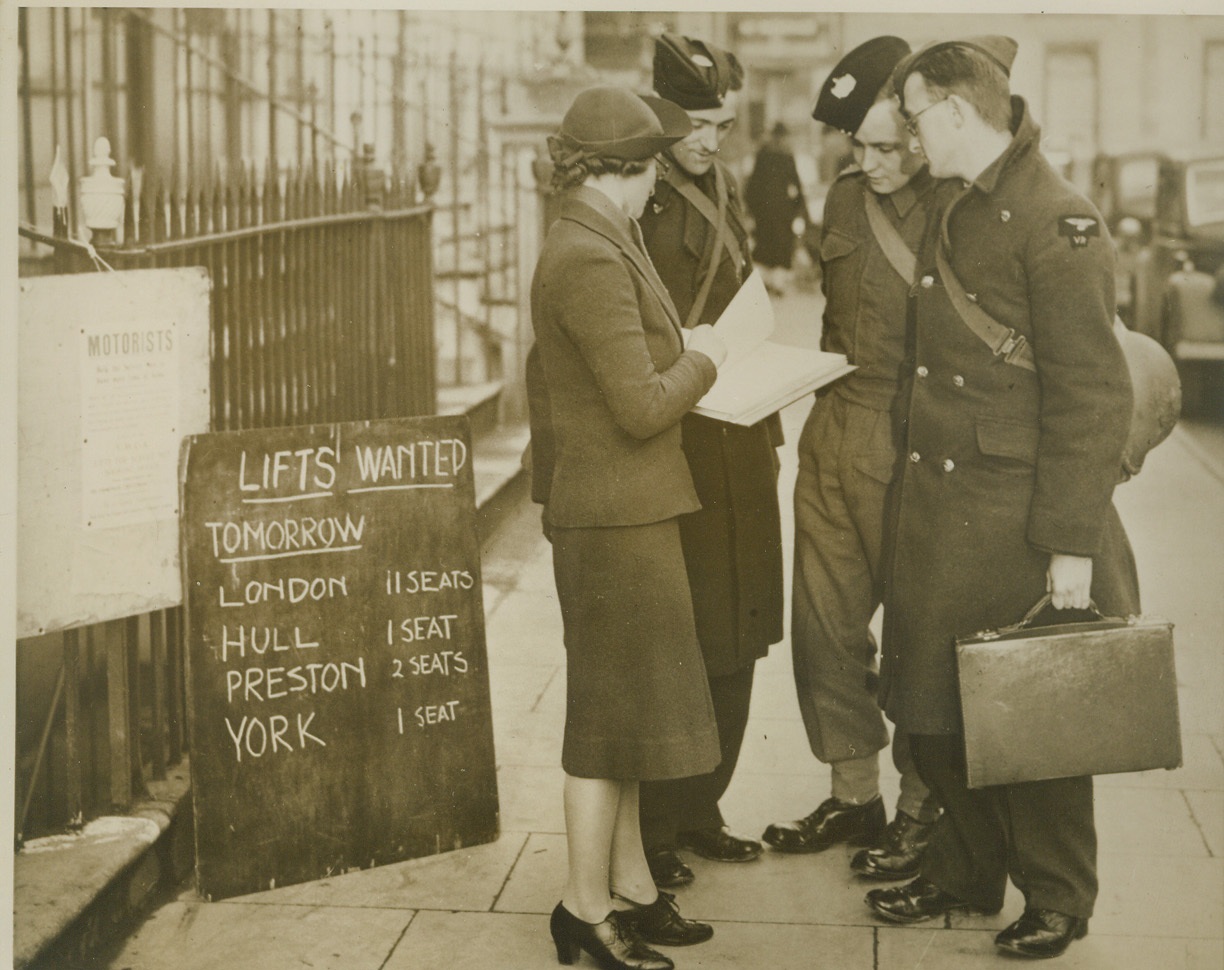
Lifts for Tommies on Leave, 1/25/41 LONDON -- A London Y.M.C.A. has enlisted the help of motorists to give rides to British soldiers on leave, thus shortening the hours of travel for the Tommies. A booking office has been established, where men on leave can register their destination and day of travel. Appeals to motorists are made in theaters and by means of posters. This Y.M.C.A. worker is seen checking out three soldiers who have found motorists to take them home. Credit: (ACME);
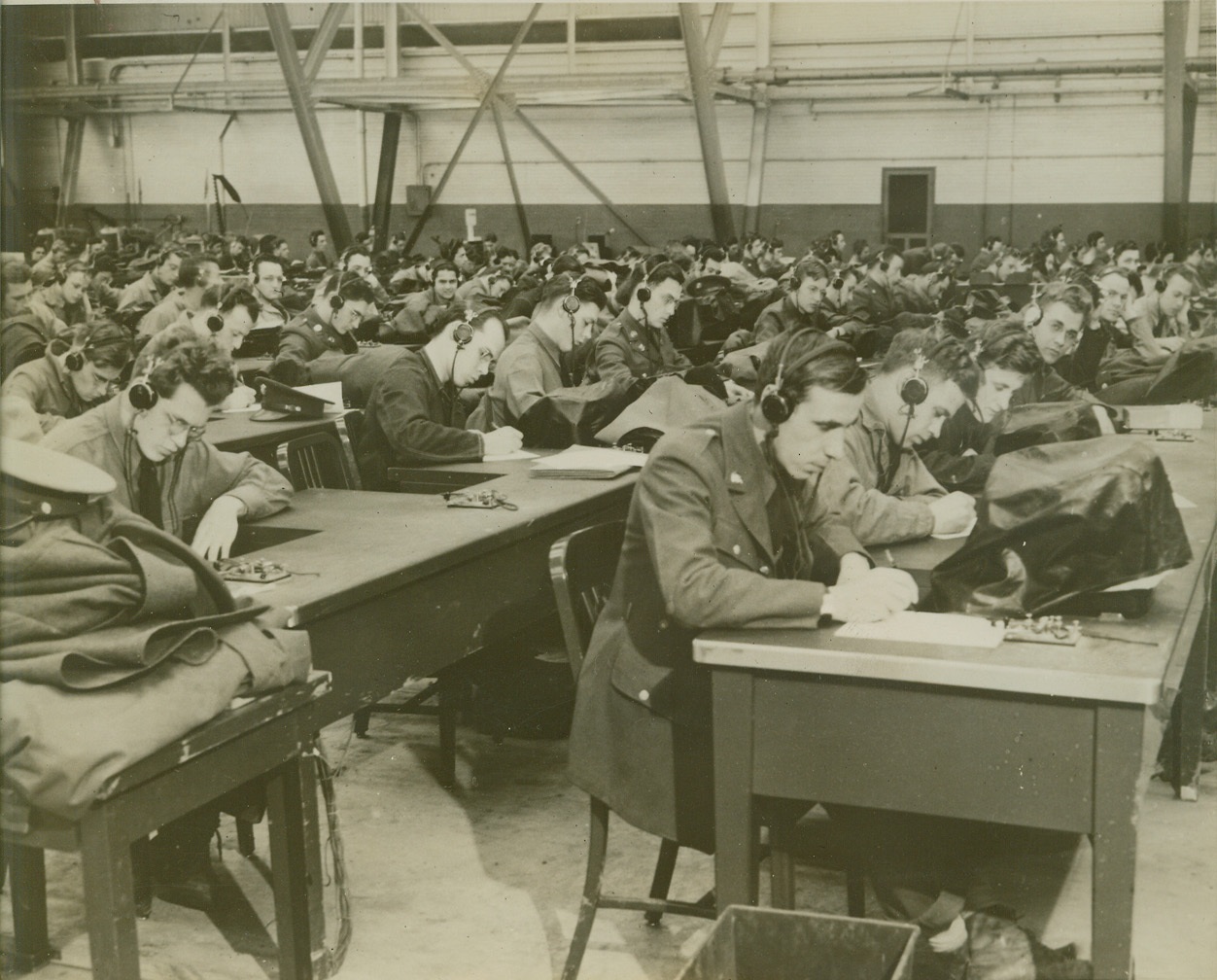
“Hams” of Other Years in the Army Now, 1/25/41 Belleville, Ill.—A lot of those “hams” you used to hear on short waves are in the Army now. Here’s a view of some 500 of them at Scott Field, the Army’s largest school for Air Corps radio operators and teletype men, receiving instruction in code transmission and receiving. Credit: ACME.;
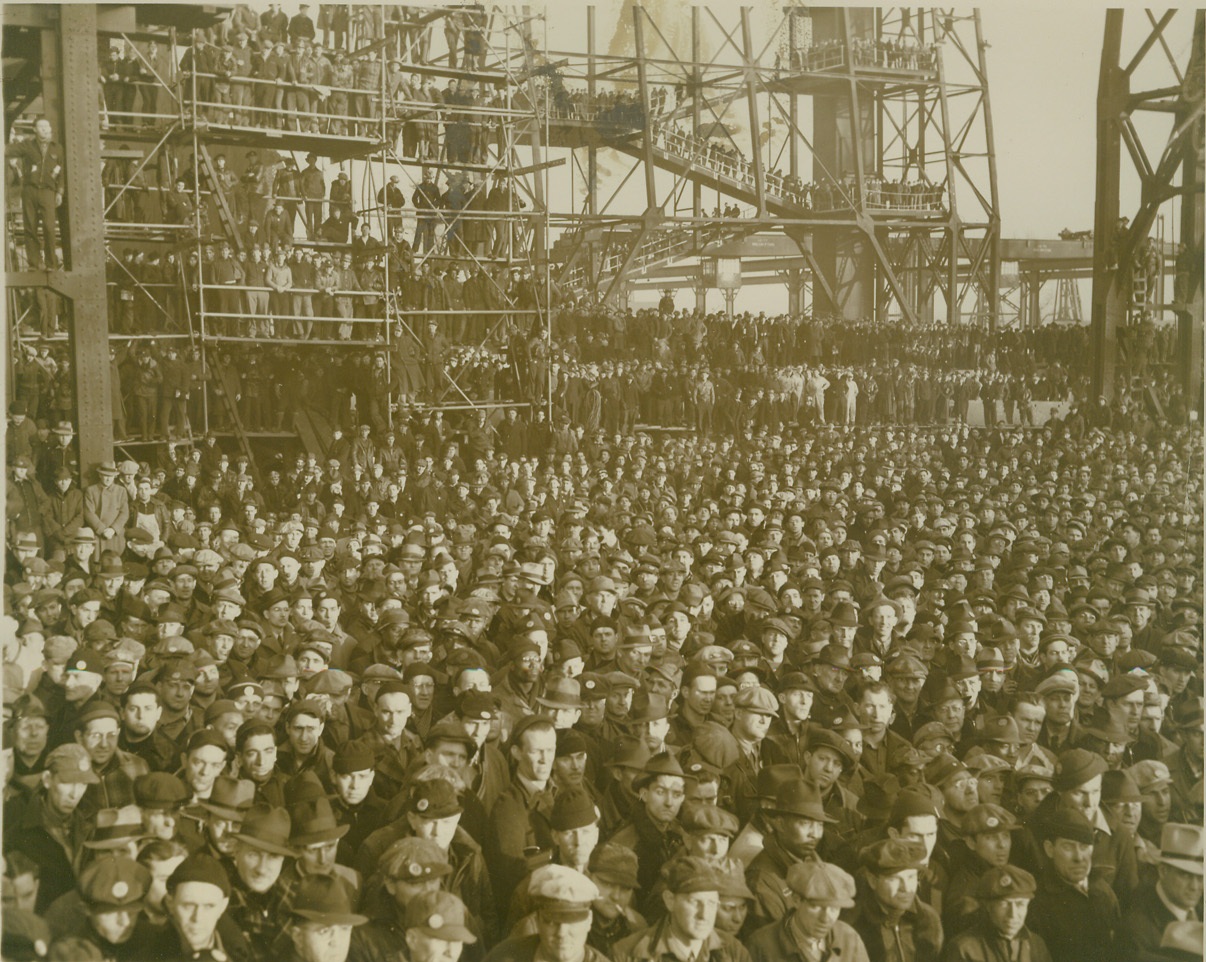
LAY KEEL OF SUPER-DREADNAUGHT, 1/25/41 PHILADELPHIA, PA: - Seven thousand workers of the Philadelphia Navy Yard, as well as Naval and Wisconsin State Officials, crowded every nook and corner within sight of the ceremonies to witness the laying of the keel of the 45,000-ton Super-Dreadnaught Wisconsin, January 25. Cost of constructing the vessel will be $90,000,000. Credit: ACME;
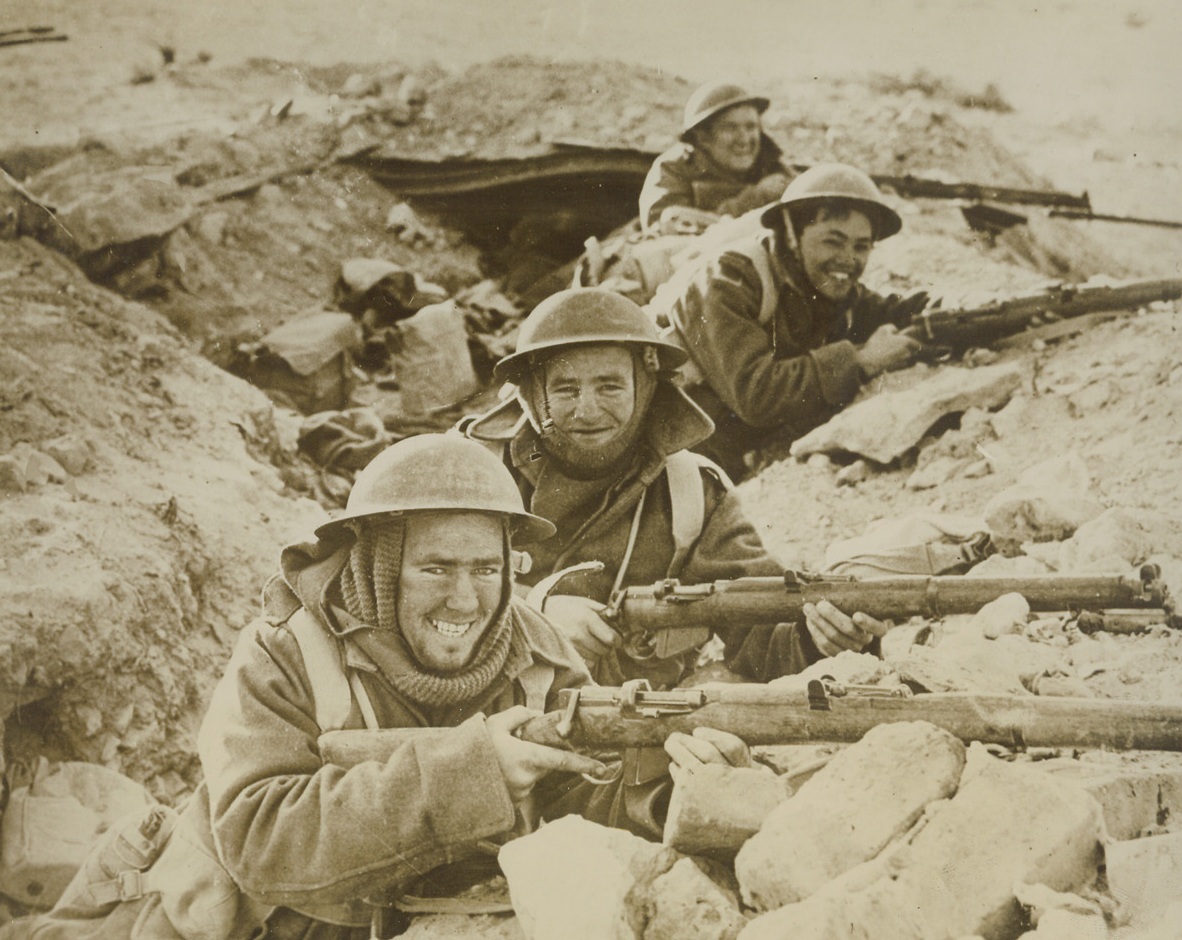
Aided Fall of Bardia, 1/25/41 BARDIA—These smiling Tommies are shown in front line trenches as they aided British forces in battering the Italian desert stronghold of Bardia into submission. This part of the desert wasn’t warm, judging from the heavy coats and mufflers. Credit: ACME.;
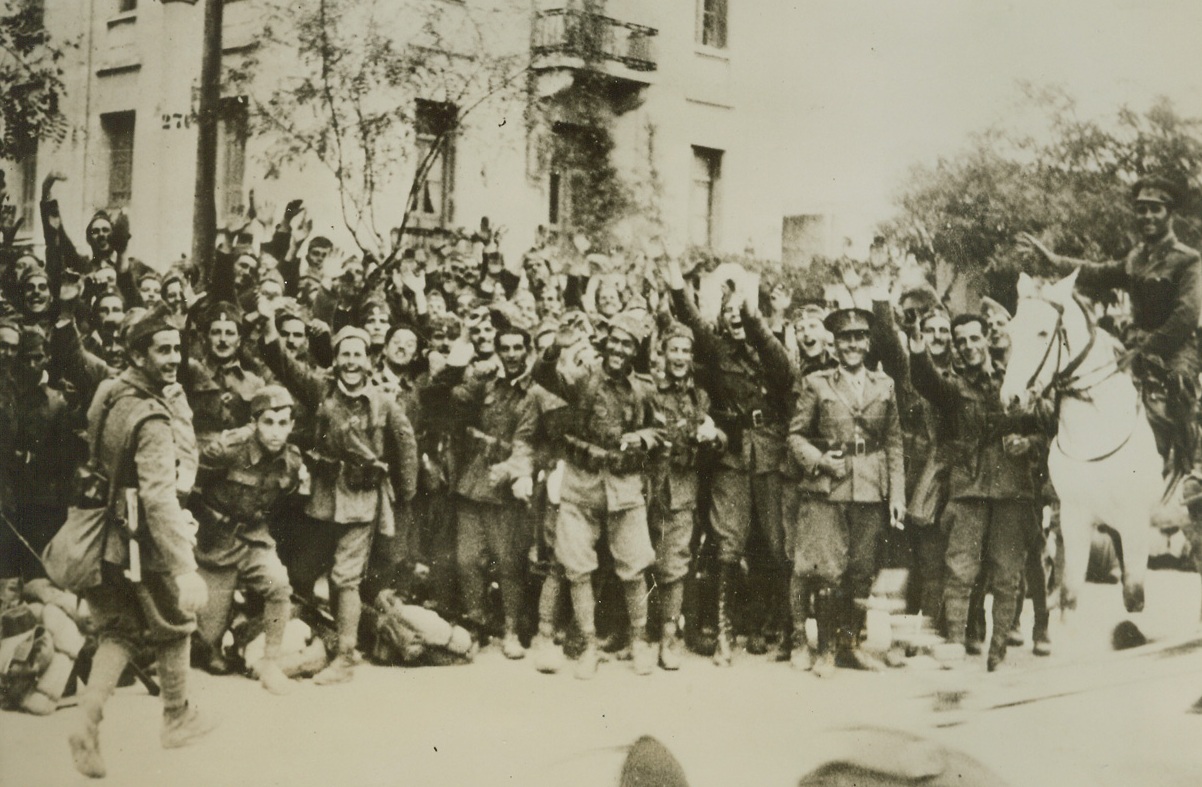
THE GALLANT GREEKS, 1/25/41 GREECE—Enthusiastic Greek soldiers cheering just before they left for the front to aid the campaign in Albania against Italy. This superb morale is typical of the victorious Greek forces. Credit: Acme;
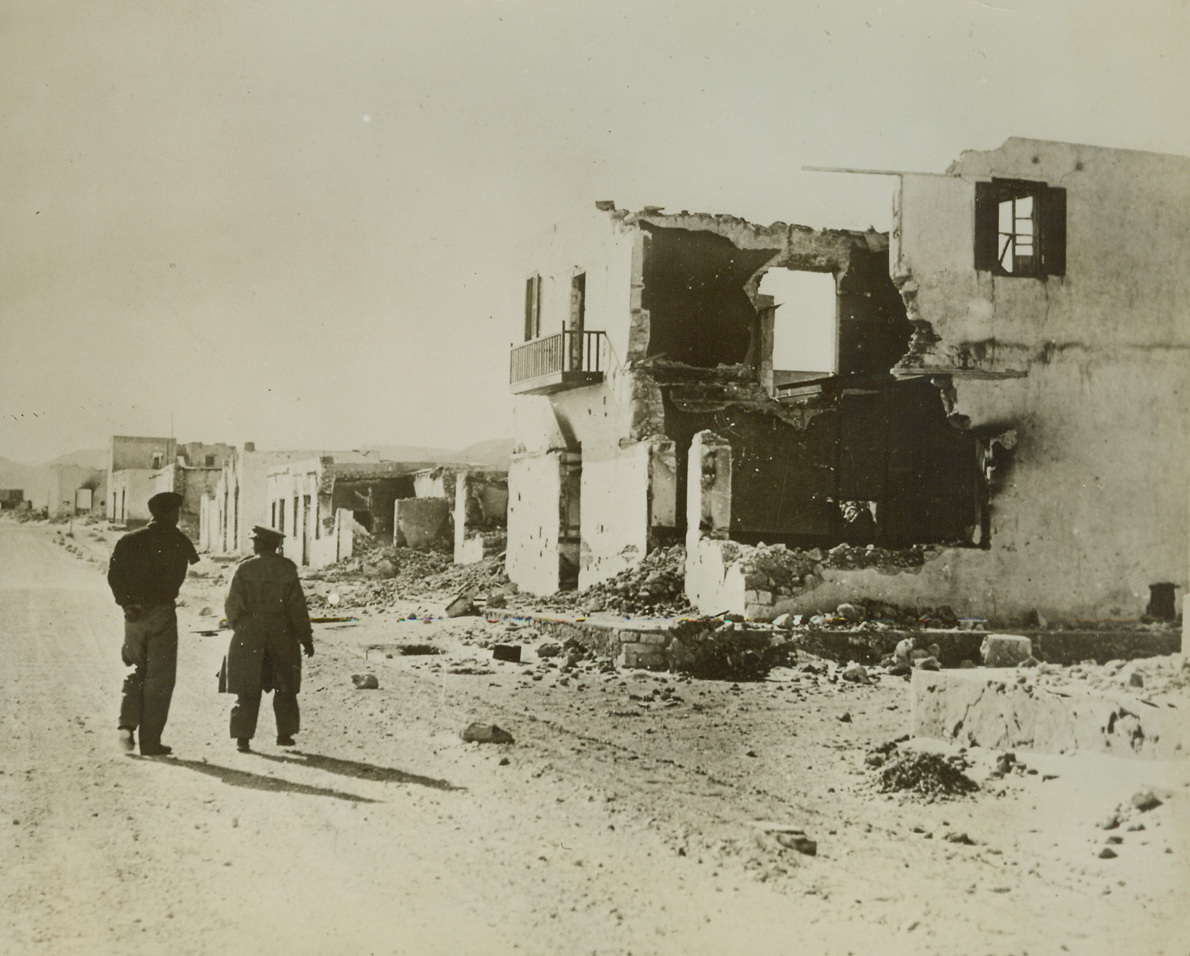
After Sollum Fell to British, 1/25/41 Sollum – British soldiers survey the battered ruins of Sollum, one of the Italian strongholds taken in the British sweep from Egypt into Lybia. Credit line (ACME);

Free French Aid in Fall of Bardia, 1/25/41 Bardia—Contributing to the fall of Bardia were these Free French forces, seen riding toward the former Italian desert stronghold in British trucks. Credit: ACME.;
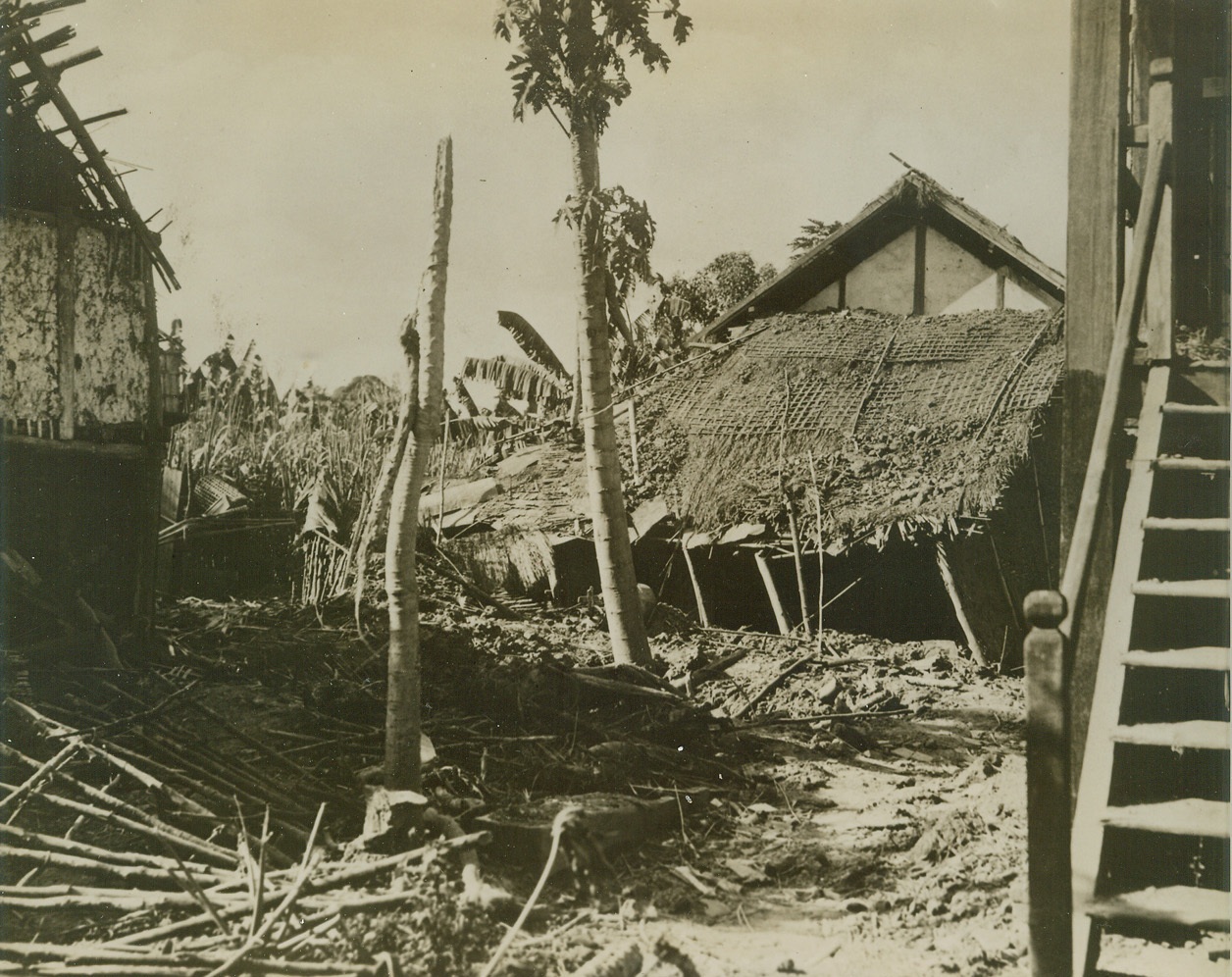
First Picture of Results of Another Undeclared War, 1/27/41 Savannakhet, French Indo China – Bamboo houses in this French Indo China city completely collapse under small Thailand (Siamese) demolition bombs. The now deserted native village of Savannakhet lying on the Mekong River bordering Thailand has been the scene of almost daily raids since the start of an undeclared war between French Indo China and Thailand concerning a border dispute. This is the first picture to reach the United States of this latest outbreak in the Far East.;
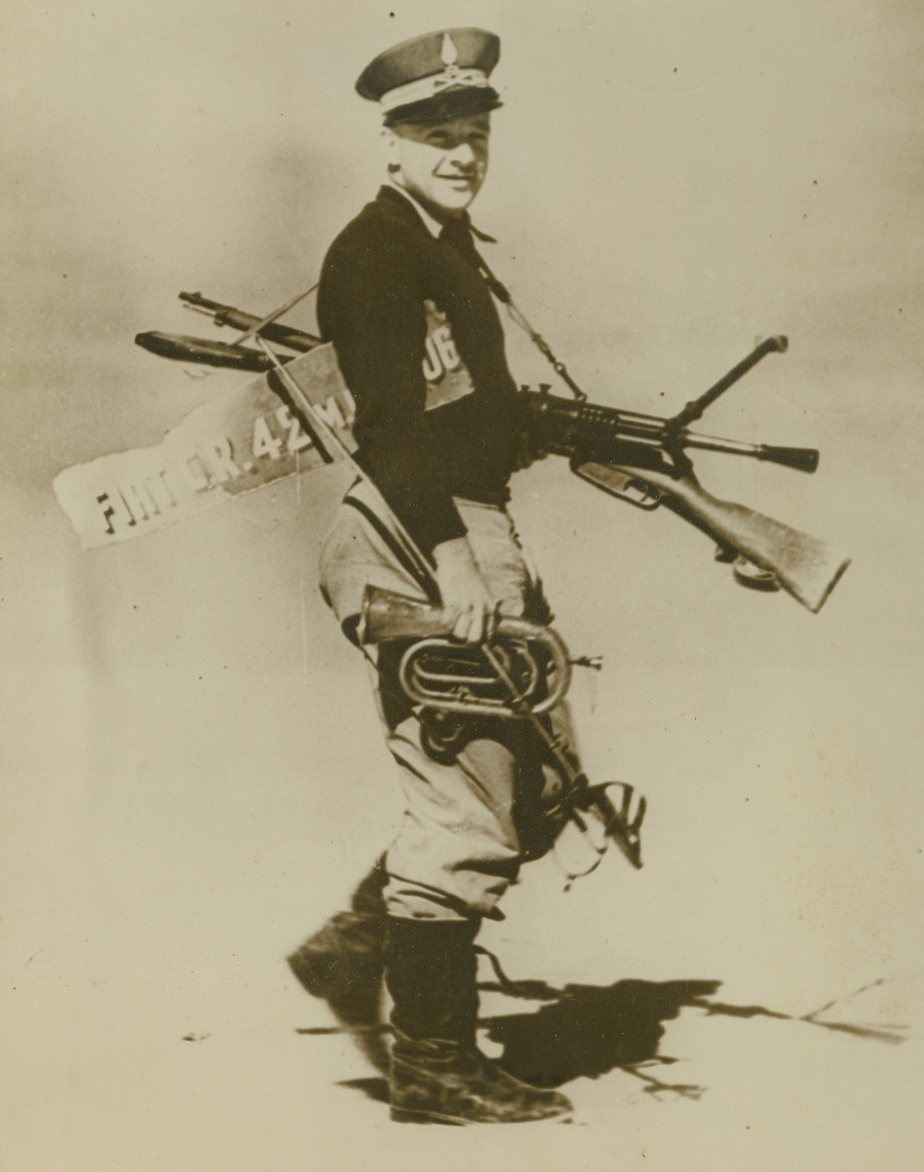
To the Victor…, 1/27/41 Africa – An Italian officer’s cap, sword, bugle, guns and a sign-post being carried away as souvenirs by an RAF pilot aiding British forces in Africa.;
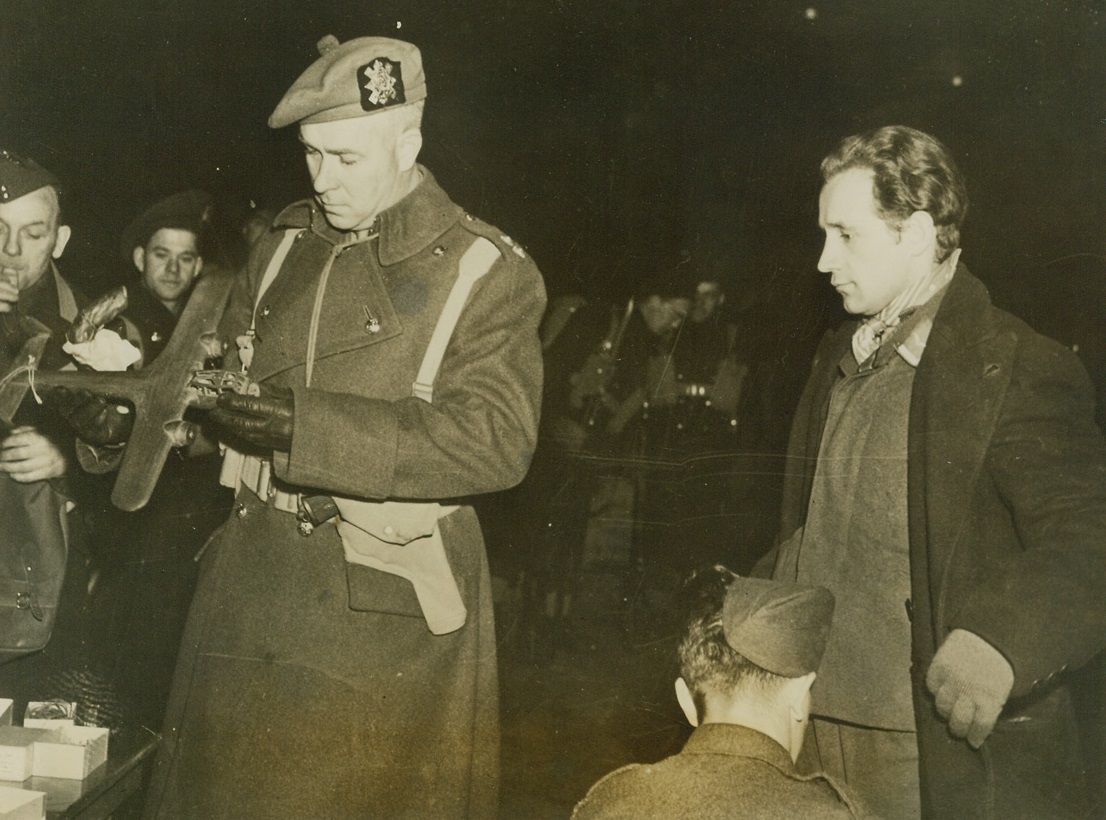
War Prisoners Reach Canadian Shores, 1/27/41 Several hundred prisoners captured by the British arrived at an East Canadian port and were put on trains for Canadian internment camps. In above photo a guard examines a model airplane taken from a prisoner. According to censored caption, these articles are usually returned. Credit: ACME;
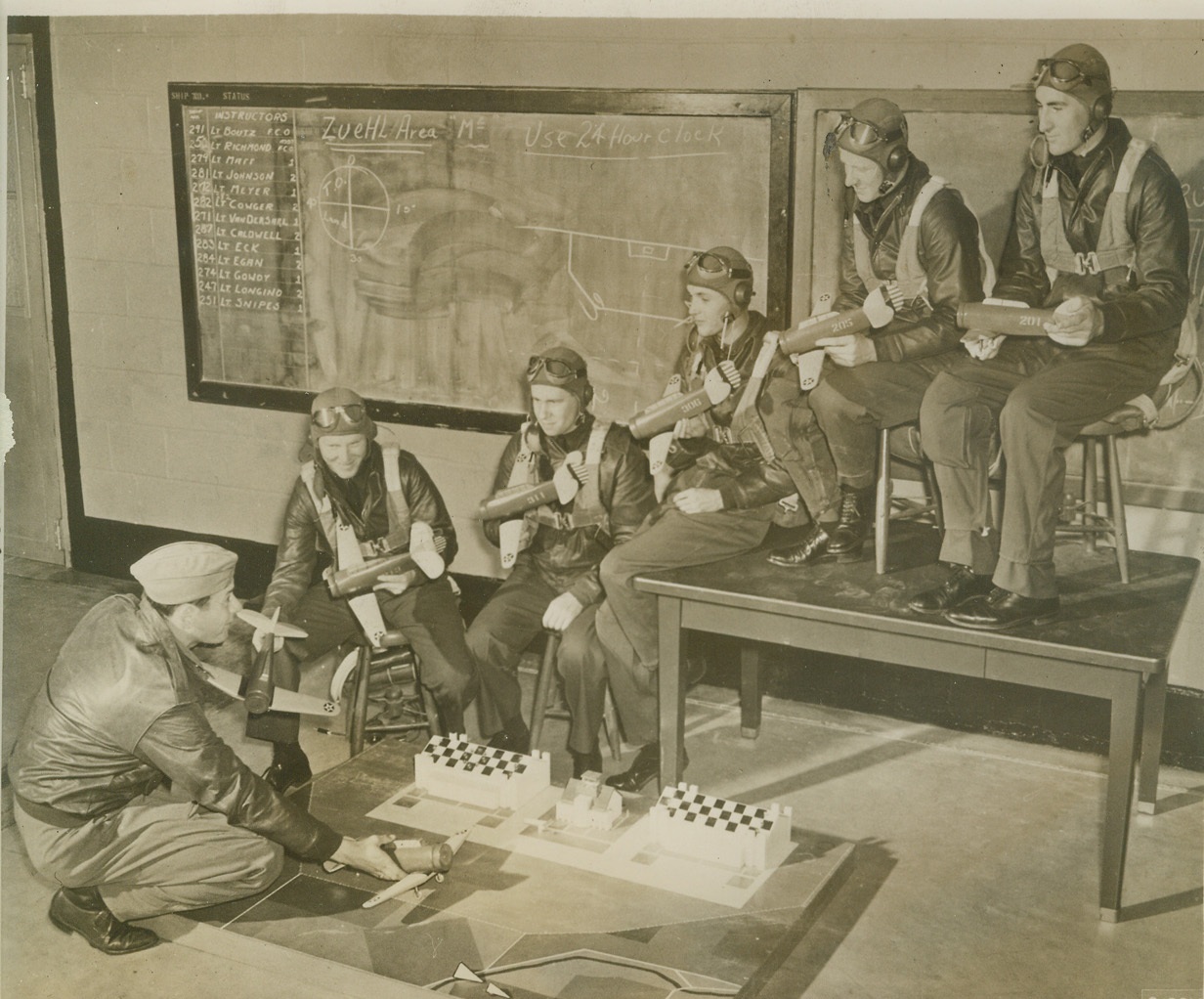
Training with Models, 1/28/41 RANDOLPH FIELD, TEXAS – Landing miniature air planes at the “West Point of the Air” on a tiny airport seems rather silly, but actually it serves a definite purpose in illustrating the proper aerial traffic pattern to be followed. With as many as 300 planes aloft at once, rigid air discipline must be maintained. Lieut. Lloyd W. Sheppard, of Mill Valley, Calif., explains correct technique for a 180 degree approach to student pilots (left to right) George C. Salvo, Charleston, S. Car.; Samuel A. Swanzig, Versailles, Mo.; H.W. Scruggs, Hollis, Okla.; William T. Woodyard, St. Joseph, Mo.; and R.A. McNabb, Sweetwater, Tenn. Credit: (ACME);
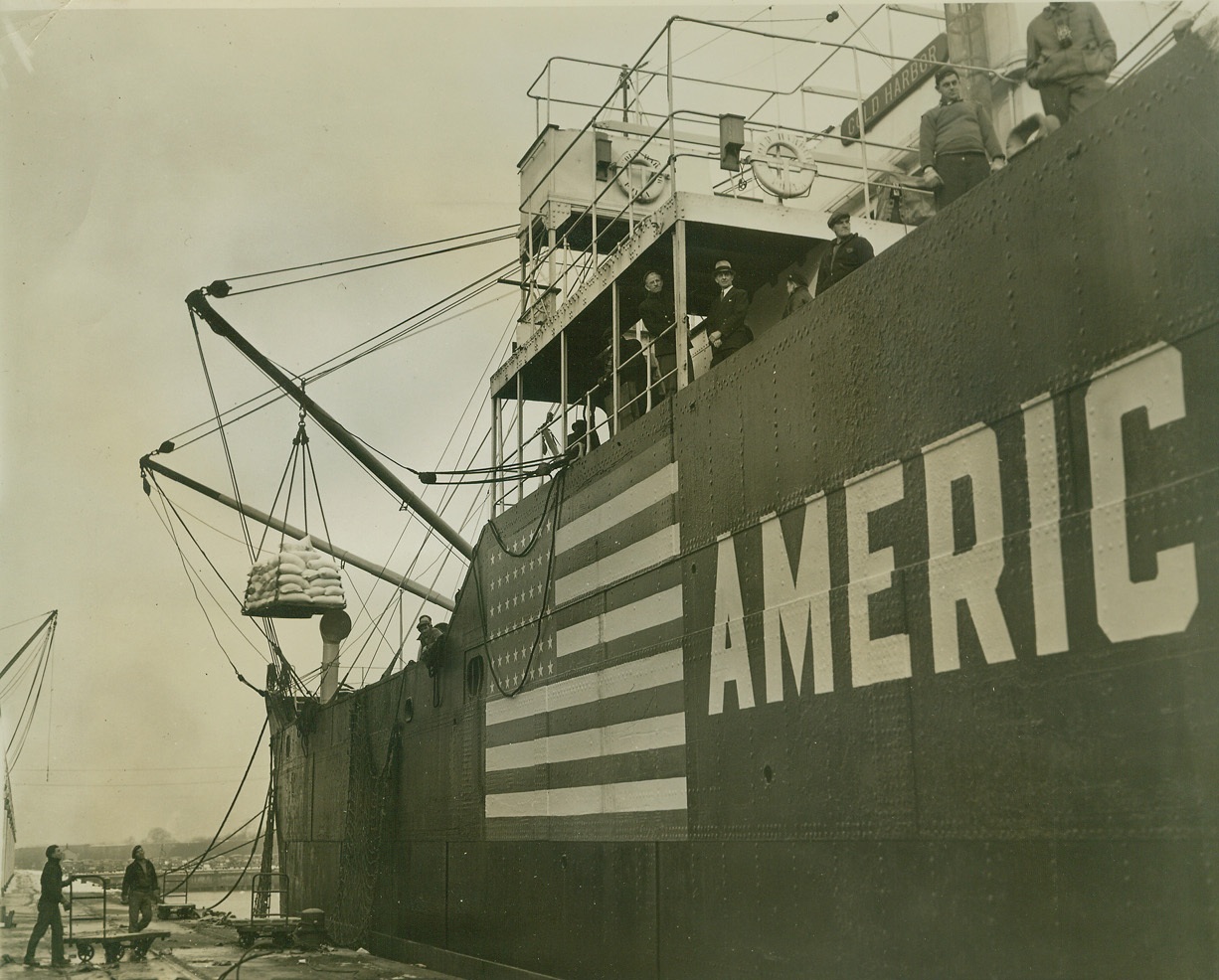
RED CROSS SHIP LOADS SUPPLIES FOR FRANCE, SPAIN, 1/28/41 BALTIMORE, MD—Sack of flour are loaded from a barge to the S.S. Cold Harbor, Red Cross “Mercy Ship” chartered from the United States lines to carry a cargo of relief supplies to Cardiz, Spain, for use in Spain and unoccupied France. The ship, which will pass through the British blockade under special permission of the British Government, will sail from Baltimore on Feb. 1st. Credit: OWI Radiophoto from ACME;
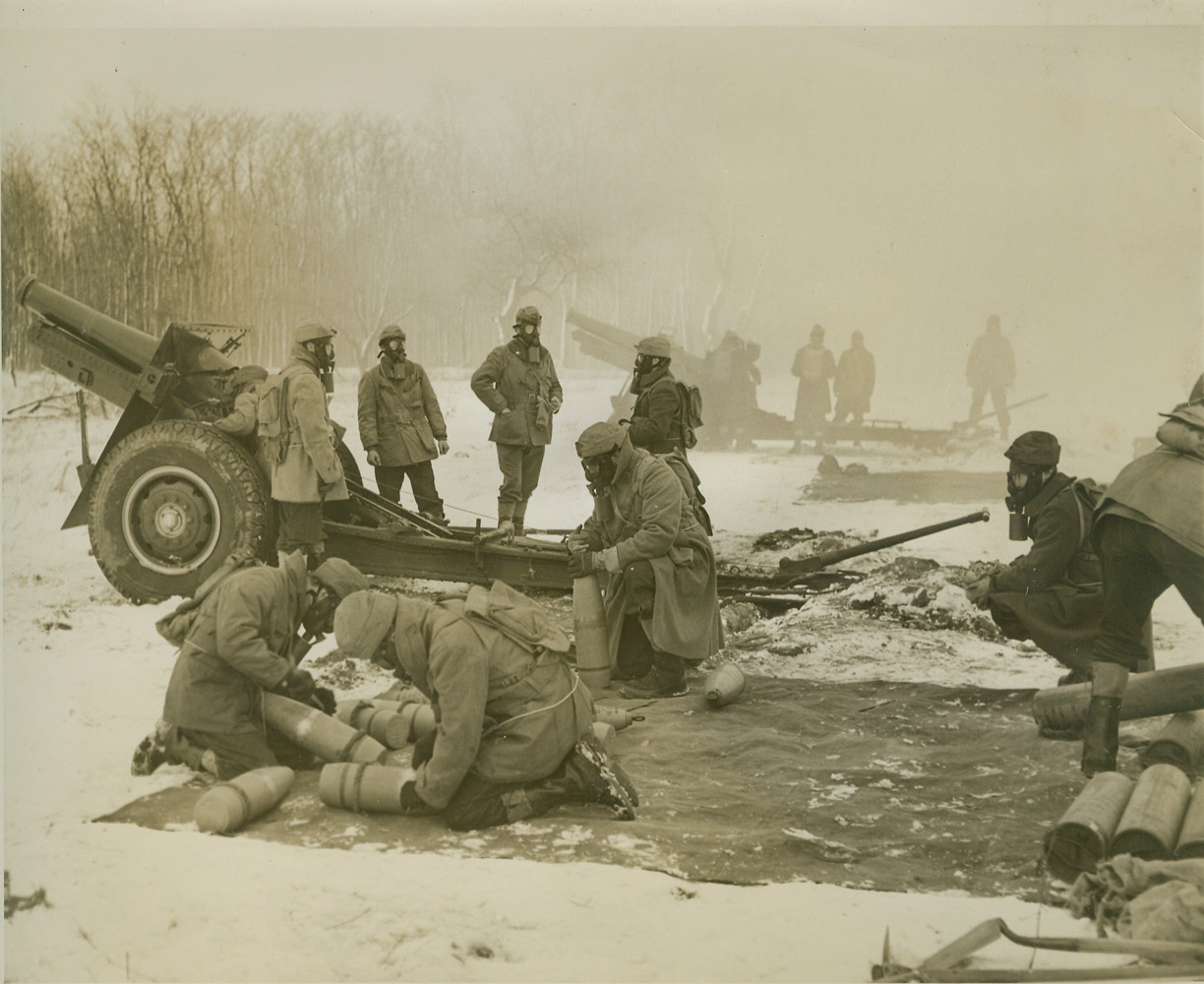
BATTERY UNDER GAS ATTACK AT FORT DIX, 1/28/41 FORT DIX, N.J. – A Battery of 155mm Howitzers of the 44th Division, under heavy gas attack from the “enemy” during maneuvers here, Jan. 28th, goes into action in a clearing in a snow-clad patch of woods. The Battery was attacked by gas by members of the 174th Infantry. Credit: OWI Radiophoto from ACME;
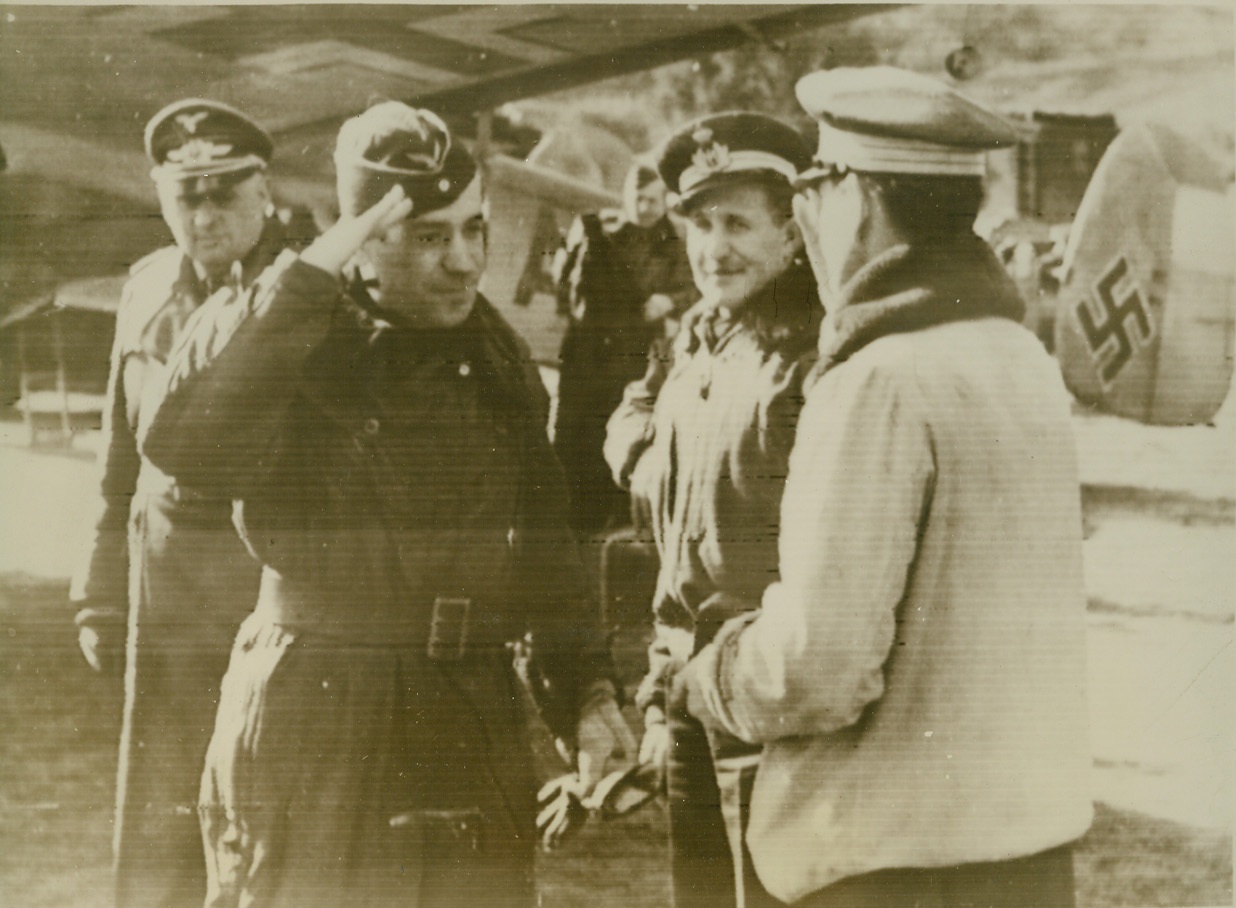
German Aces in Italy, 1/29/41 Italy – The German censor, in stating that German airmen (left) are shown reporting to an Italian air base commander, did not mention the locality. However, he did say that these air aces, and many others of the Luftwaffe, would be used to attack British bases in the Mediterranean. Photo radioed from Berlin to New York, January 29. Credit (ACME Radiophoto);
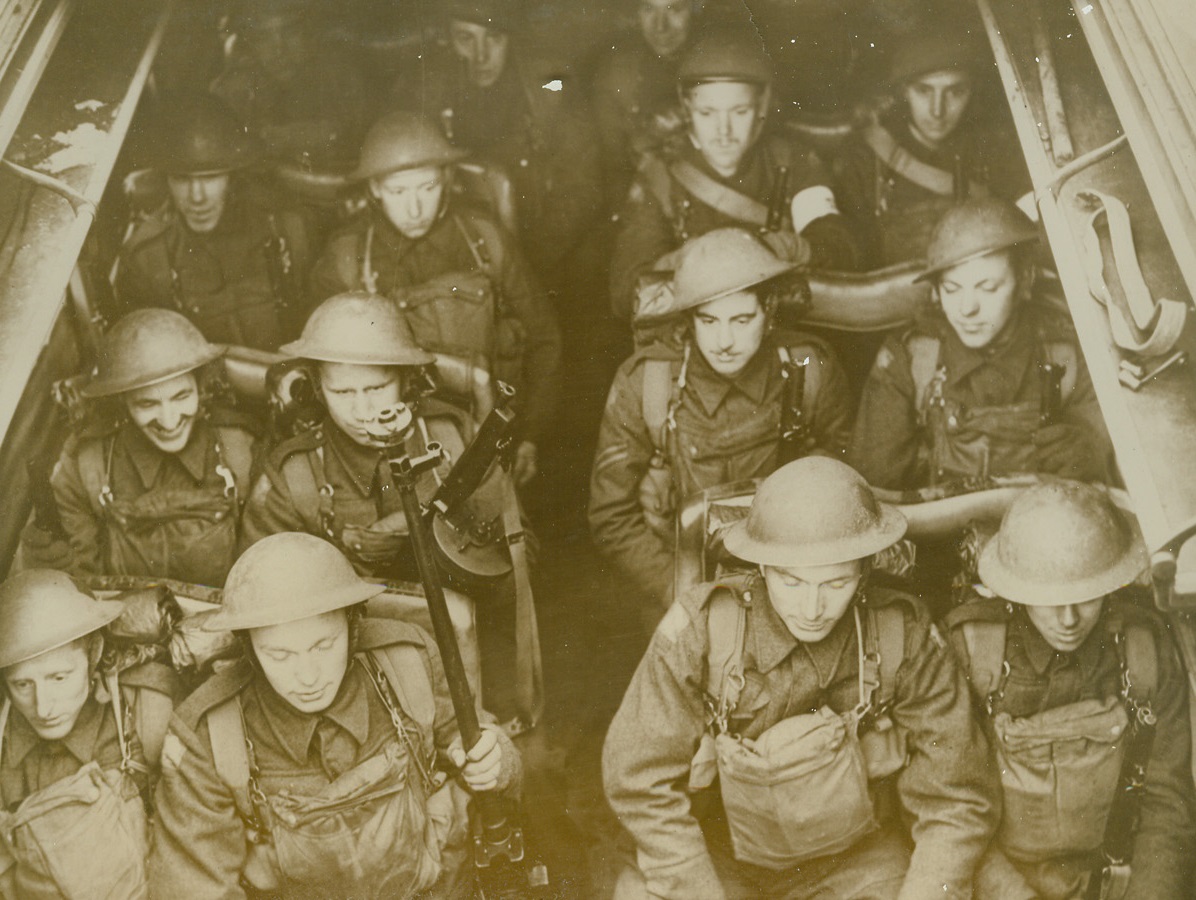
Britain Prepares For Invasion, 1/31/41 England – As word spreads throughout the nation that the German forces may soon attempt an invasion of the British Isles, the British are constantly holding maneuvers in order to meet any such attack. Above, a coach loaded with soldiers rushing to a point being “attacked.” The soldier in front, second from left, is holding an anti-tank gun. Behind him another carries a sub-machine gun. Others are equipped with rifles. Credit: ACME;





 Trash & Recycling
Trash & Recycling
 Online Payments
Online Payments
 City Documents
City Documents
 Parks
Parks
 Traffic Court
Traffic Court
 CITY PARKS
CITY PARKS
 Outdoor Recreation
Outdoor Recreation
 Volunteer
Volunteer
 Home
Home TRANSLATE
TRANSLATE
